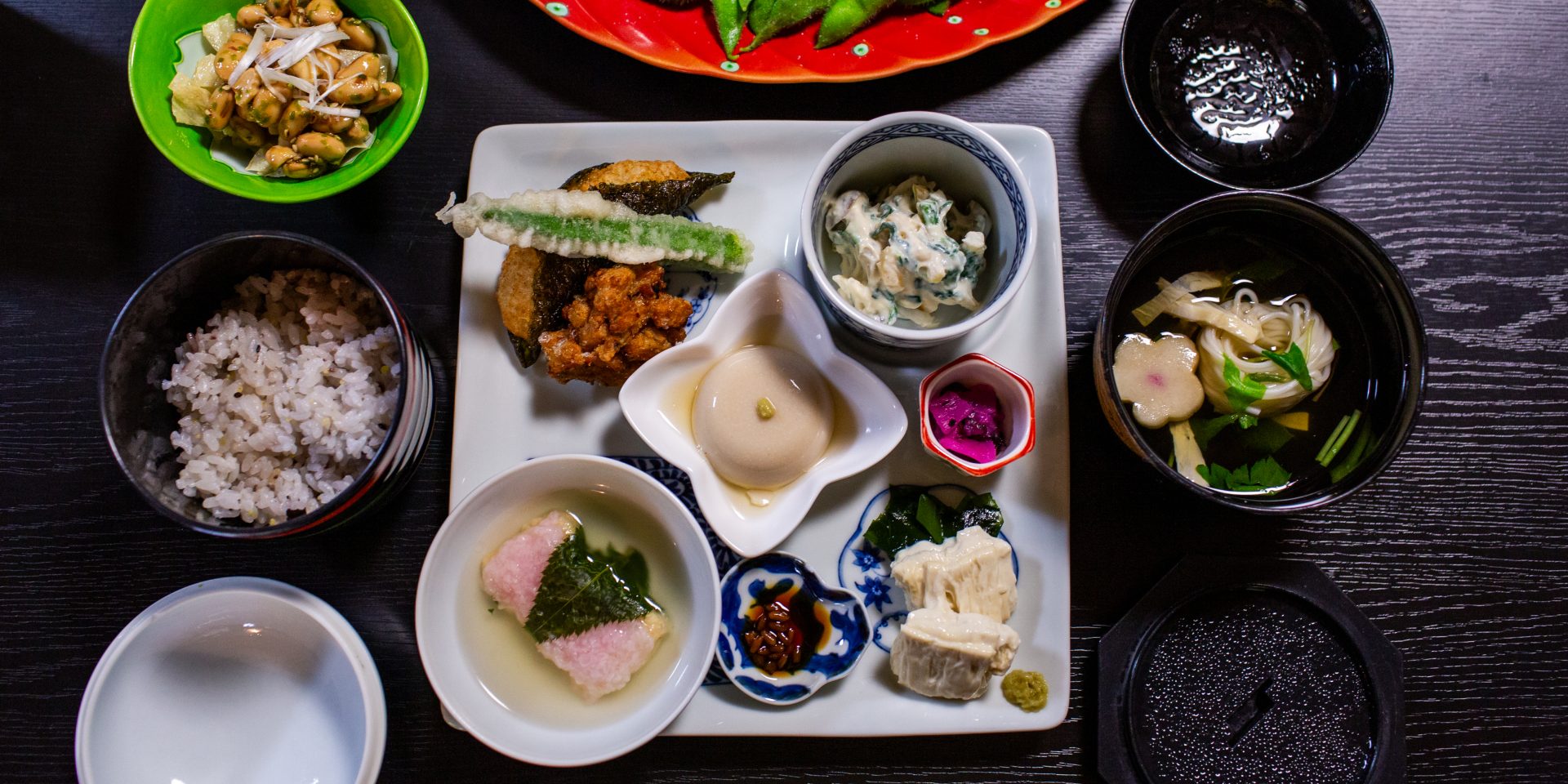
Who
Junko Higuchi
When Tokyo-born Junko married the head priest of Kakurinbo, she moved to Minobu, a quiet rural town in Yamanashi Prefecture, where she experienced a culture shock. Coming from the convenience and diversity of Tokyo, she found herself in a place that felt like it was 20 years behind—no shops, and everyone cooking everything from scratch. Her mother-in-law introduced her to a local woman who taught her the traditional methods of preparing food, a whole new world for Junko. To deepen her culinary skills, she began making monthly trips to Tokyo to study both international and Japanese cuisine at a culinary school.
Fifteen years ago, Junko had the honour of becoming the head chef of Kakurinbo after her mother-in-law retired. This marked the beginning of her journey in recipe writing, where she blended traditional techniques with a modern twist. Over the years, she’s championed locally sourced ingredients, supporting local farmers and celebrating unique regional produce. One special ingredient she highlights is the Akebono Daizu soybean, grown in Minobu’s high-altitude region since the Meiji era. With its geographical indication, this soybean is prized for its large size, high sugar content, and exceptional flavour—perfect for fermentation into natto, a popular Japanese food. Junko learned to make natto from an elderly local woman, who used instinct rather than recipes, fermenting the soybeans by keeping them under her kotatsu (a heated low table) next to her feet for extra warmth! After much trial and error, Junko adapted this traditional method into a recipe format for Kakurinbo’s kitchen. Now, Kakurinbo’s natto has become a beloved dish that draws visitors from near and far.
Kakurinbo, located in Yamanashi Prefecture, is a shukubo (temple lodging) that initially served as accommodation for monks visiting the neighboring 750-year-old Kuonji Temple, founded by Nichiren Shonin in 1274. With fewer monks visiting today, Junko’s vision has transformed Kakurinbo into a popular guesthouse, welcoming local and international guests to experience authentic Japanese culture. Visitors can enjoy activities like 金継ぎ kintsugi (golden joinery), calligraphy, wine label making, yuba (tofu skin) making, early morning prayers at Kuonji temple, and views of the lush Minobu mountains, with Mount Fuji in the distance on clear days.
On my visit, Junko prepared her famous Temple Lunch (おてらんち – a play of word), a delightful spread centred around ゆば (yuba). This delicate beancurd skin/tofu skin forms when soy milk is gently heated, creating a thin film that is lifted off and enjoyed as yuba. For centuries, yuba has been a valuable source of protein and nutrition for Buddhist monks, symbolising simplicity and mindfulness. Her おてらんち (temple lunch) includes dishes like 白和え (shira-ae) mashed tofu salad, ゆば さしみ (yuba sashimi), sakura mushi yuba, なっとう (natto) nuggets, tempura of okra and とろろ 海苔 (tororo nori), and freshly harvested Akebono Daizu (あけぼの大豆). These dishes are based on shojin ryori, a style of traditional Buddhist cooking that’s entirely plant-based, highlighting seasonal vegetables and mountain plants in their purest form. Shojin ryori has recently gained popularity beyond temple walls for its health benefits and the way it brings out each ingredient’s delicate, natural flavours.
In line with her commitment to sustainability, Junko purchases imperfect fruit from local farmers and turns it into a variety of delicious fruit confitures served to guests at Kakurinbo. This practice reduces food waste, saves money, and helps support the local farmers. Junko also has her own tips for reducing food waste in the kitchen. For instance, she saves vegetable and fruit peels, blends them, and uses the mixture as a marinade for roasted dishes, creating a rich, flavourful sauce. When making ginger ale, she doesn’t discard the ginger fiber—instead, she fries it with soy sauce and a bit of sugar to make shoga tsukudani, a side dish that pairs perfectly with warm rice.
Through her work, Junko preserves local traditions while creatively incorporating new ideas, fostering a unique dining experience that reflects the heart of Kakurinbo and the Minobu region.
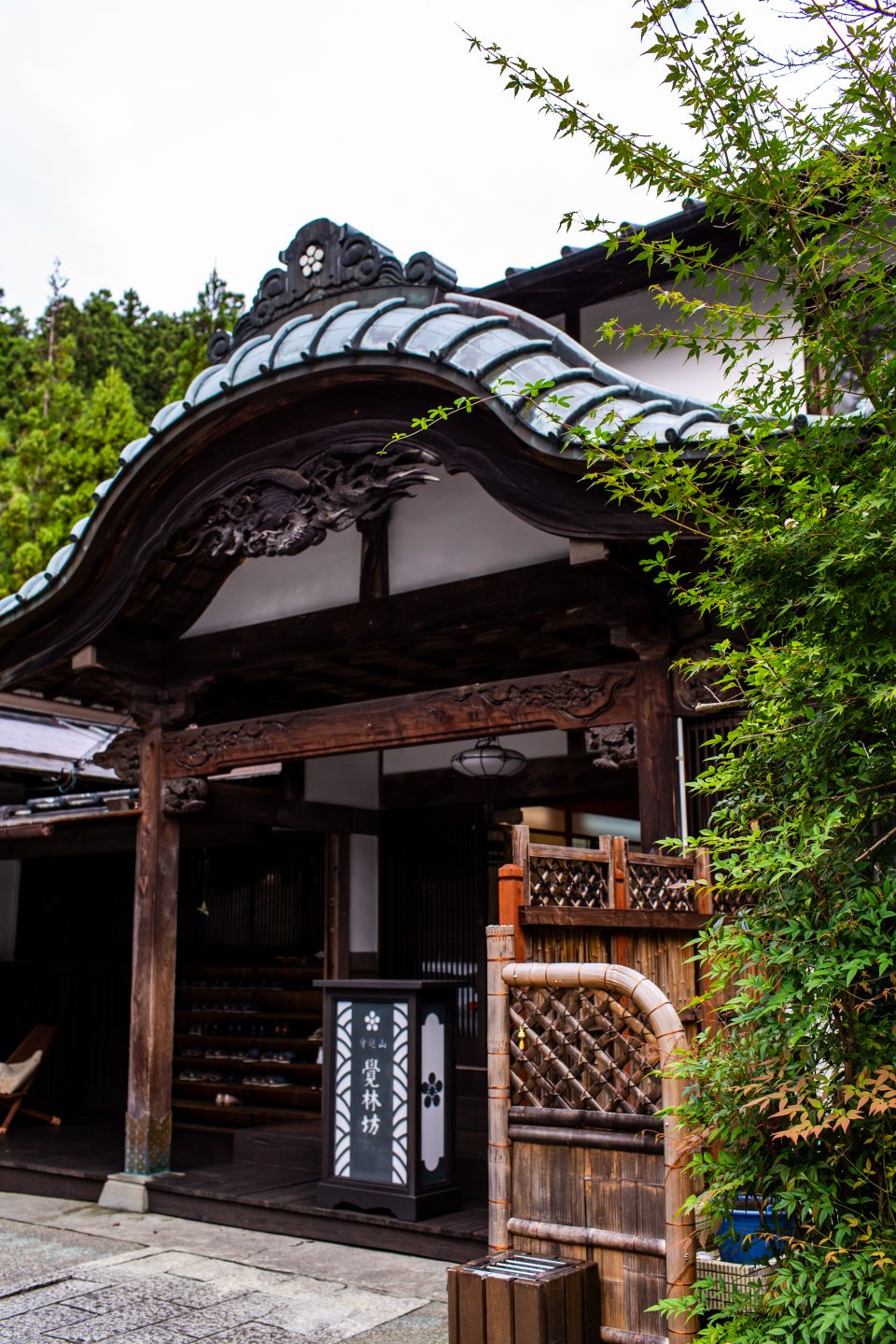
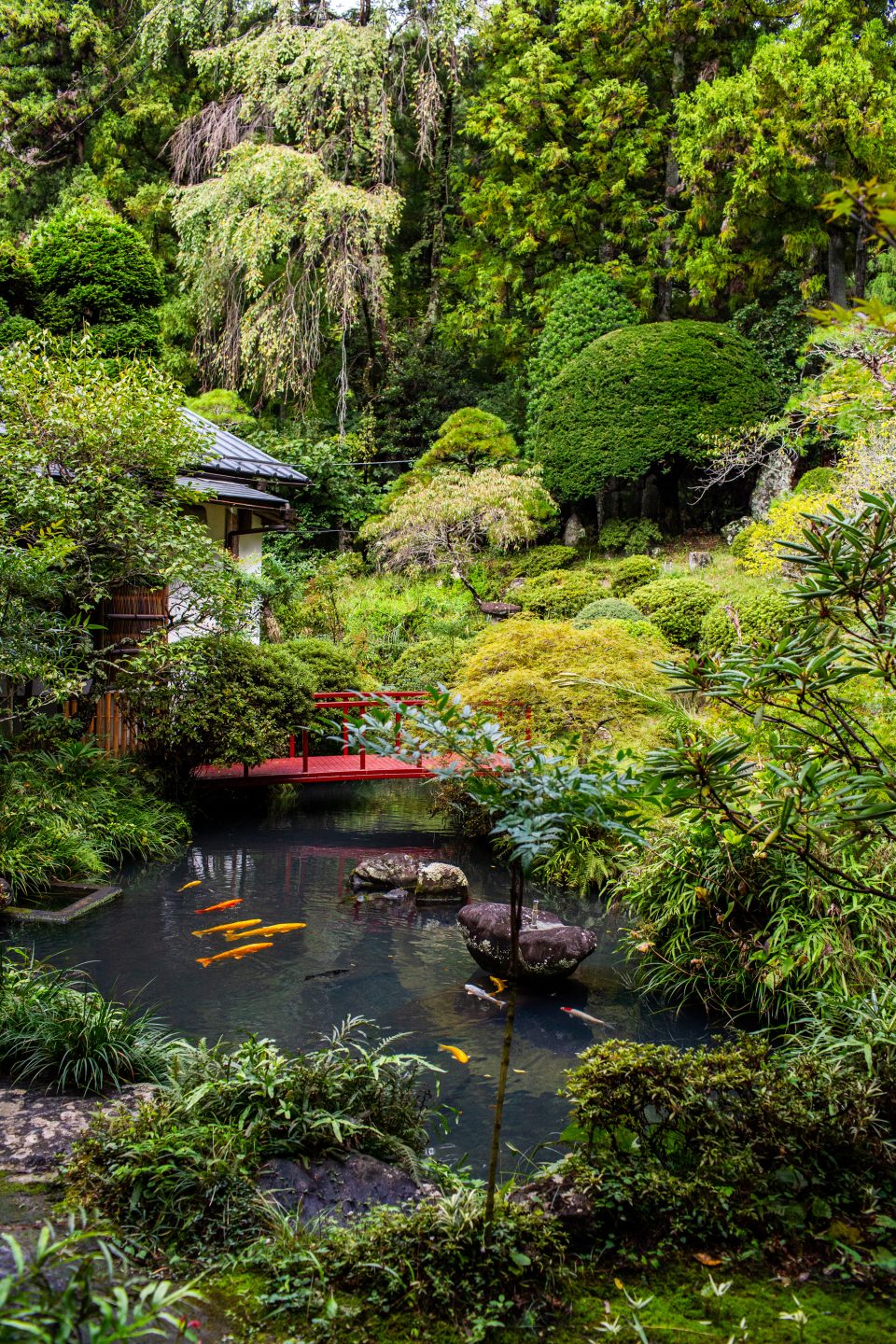
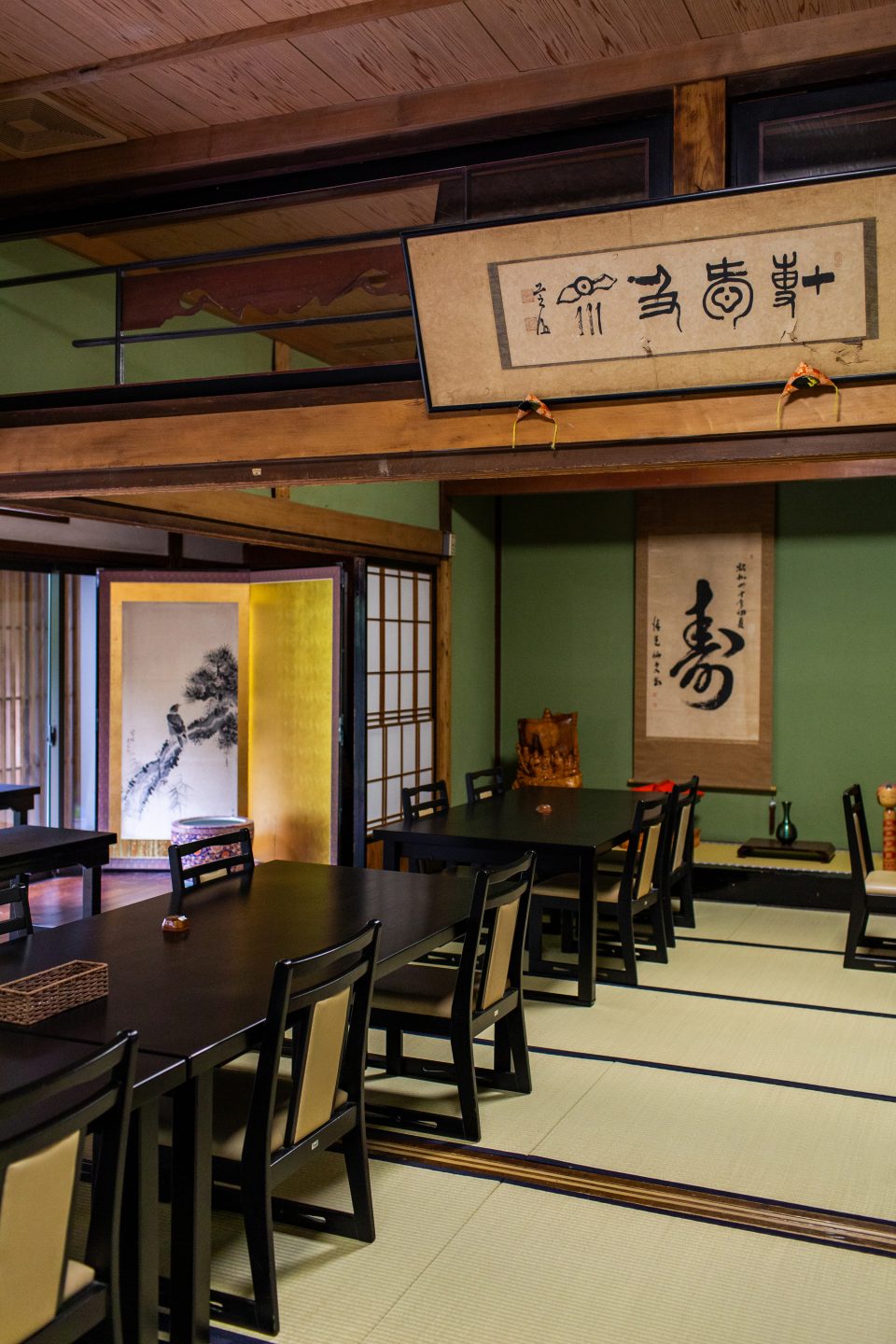
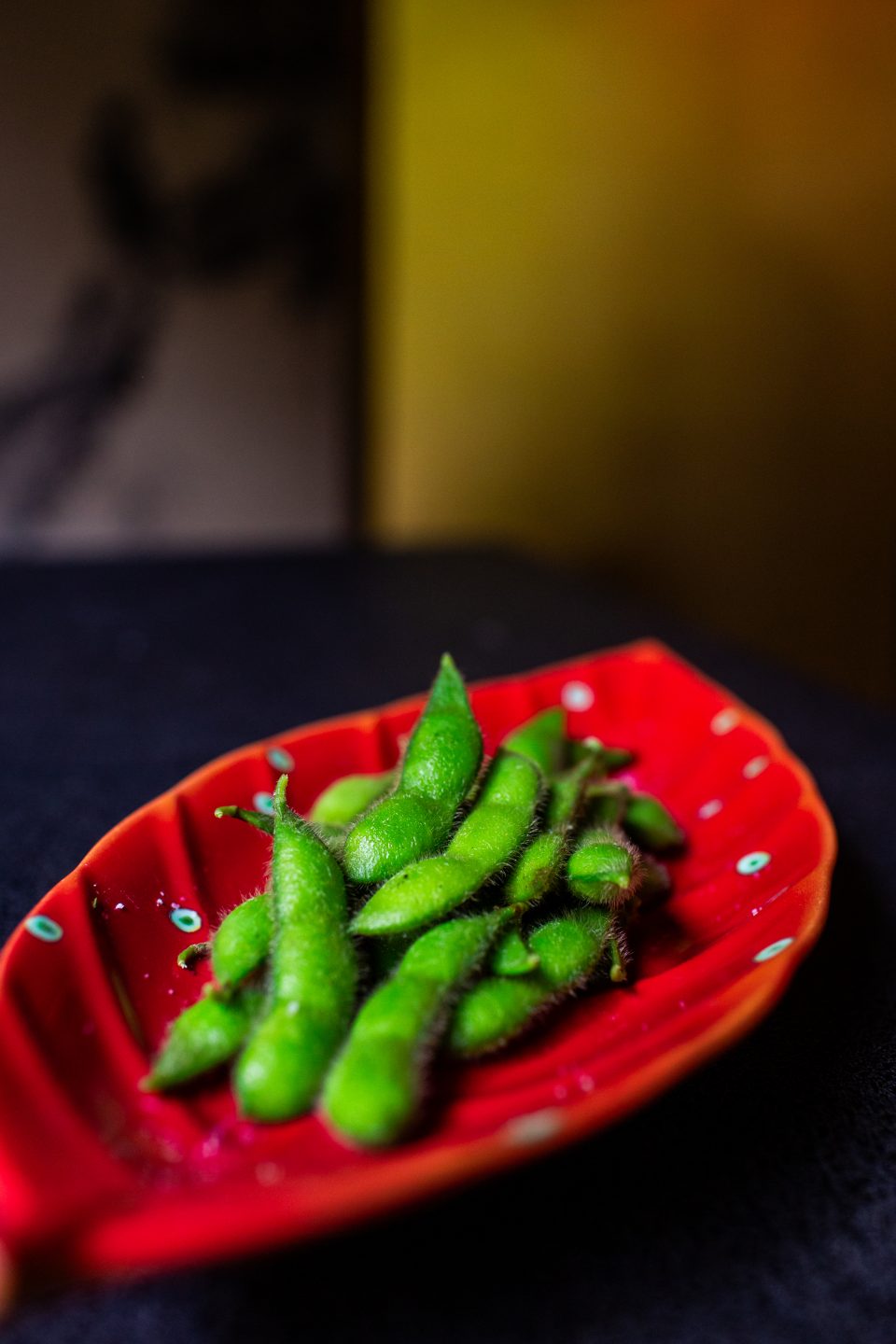
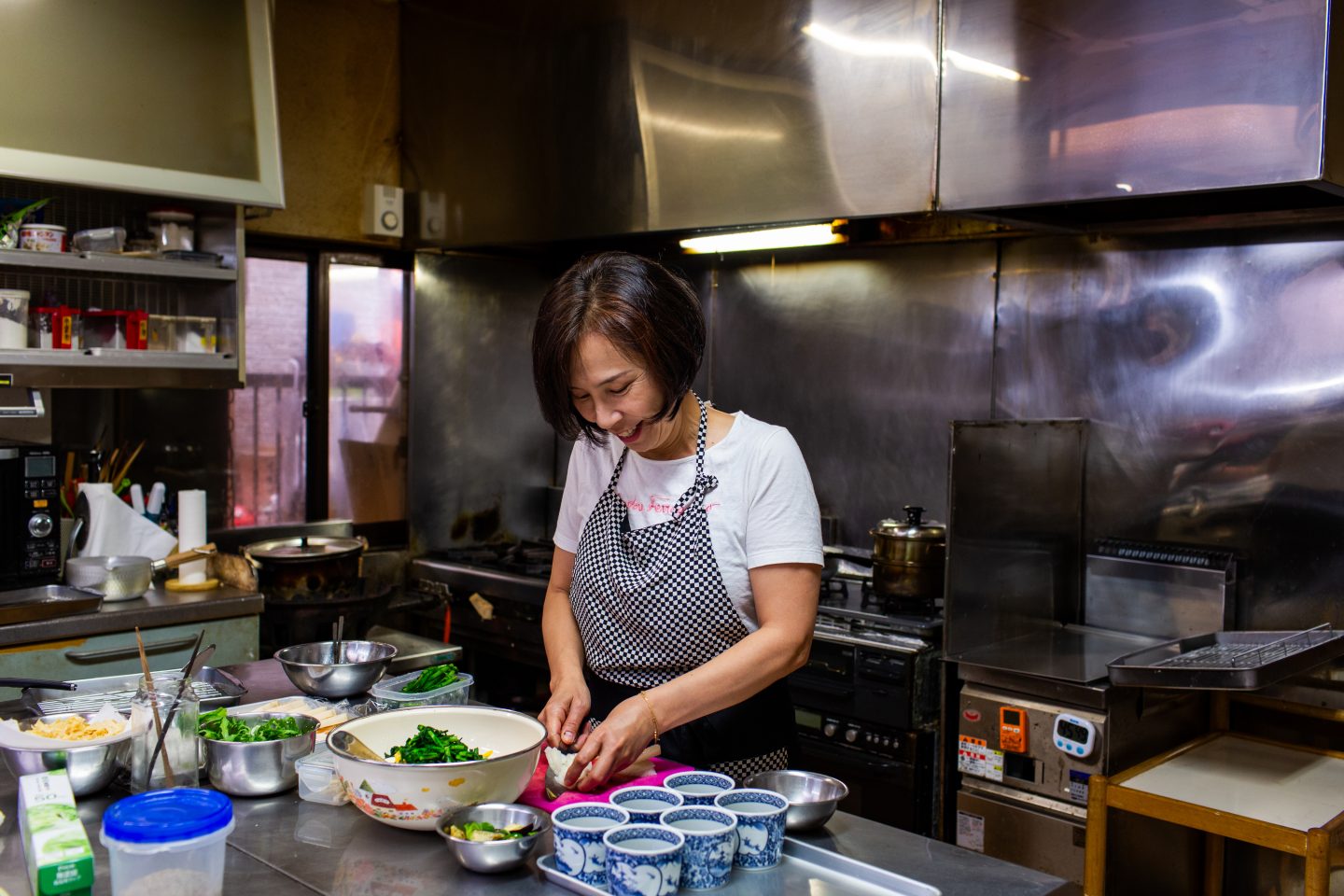
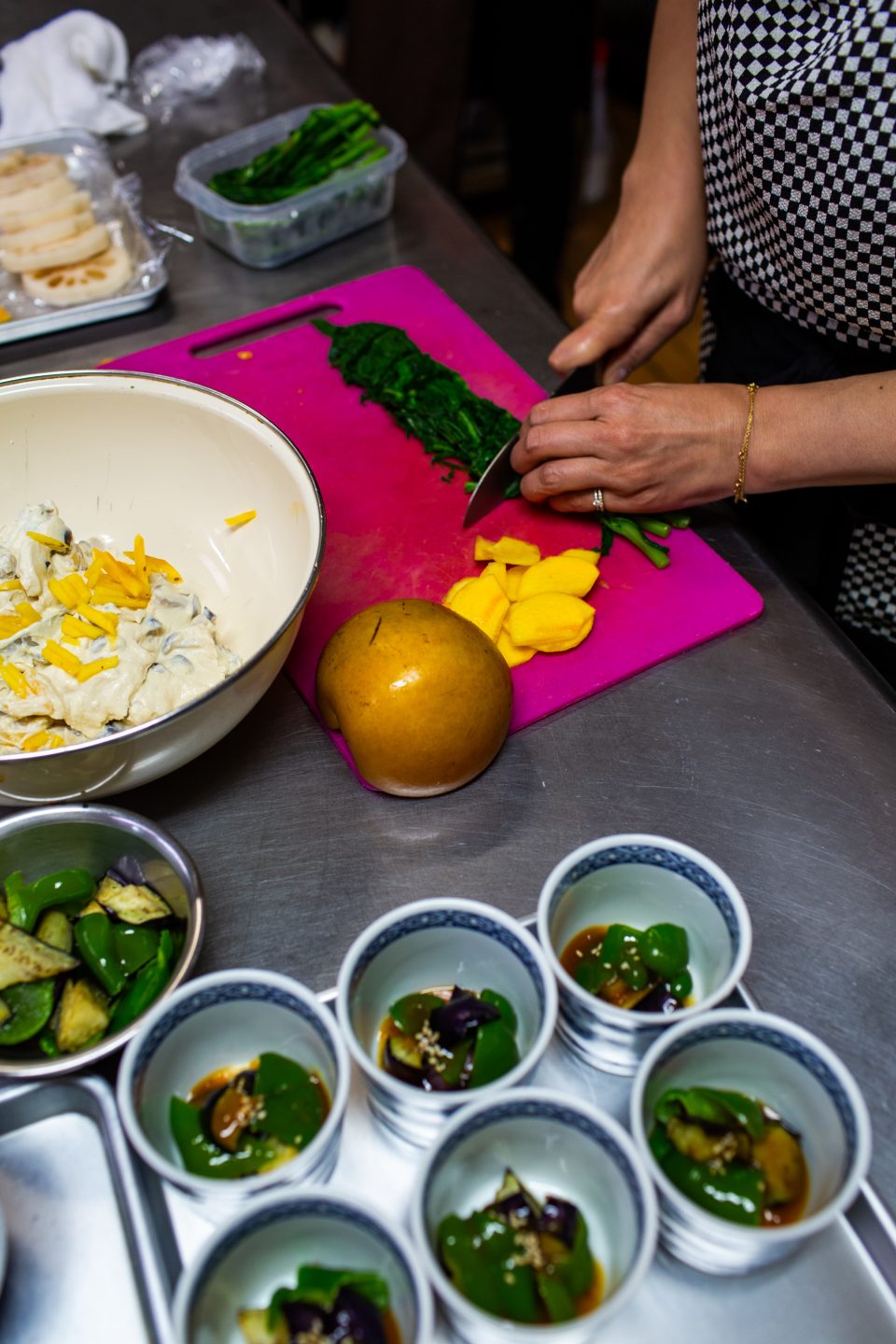
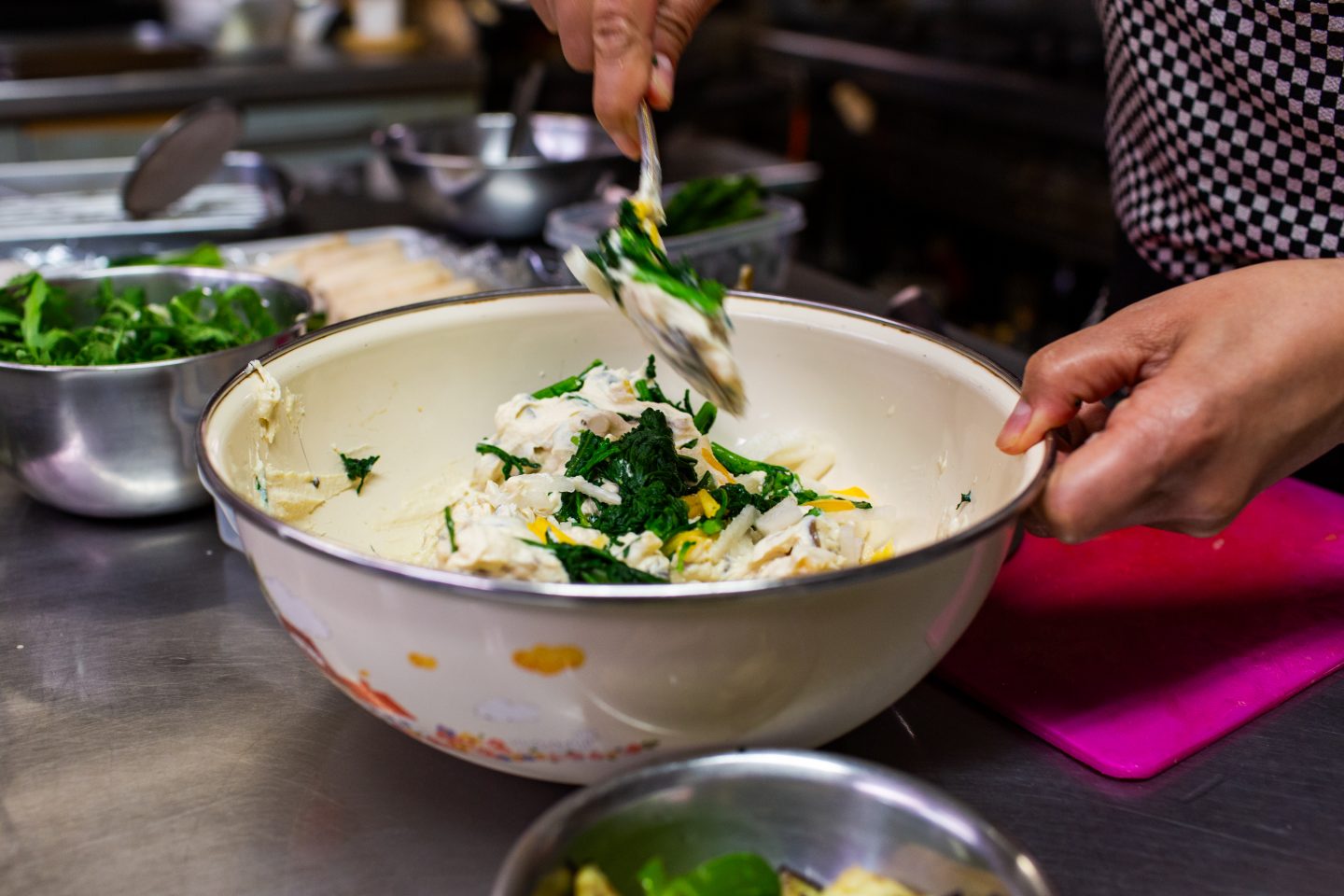
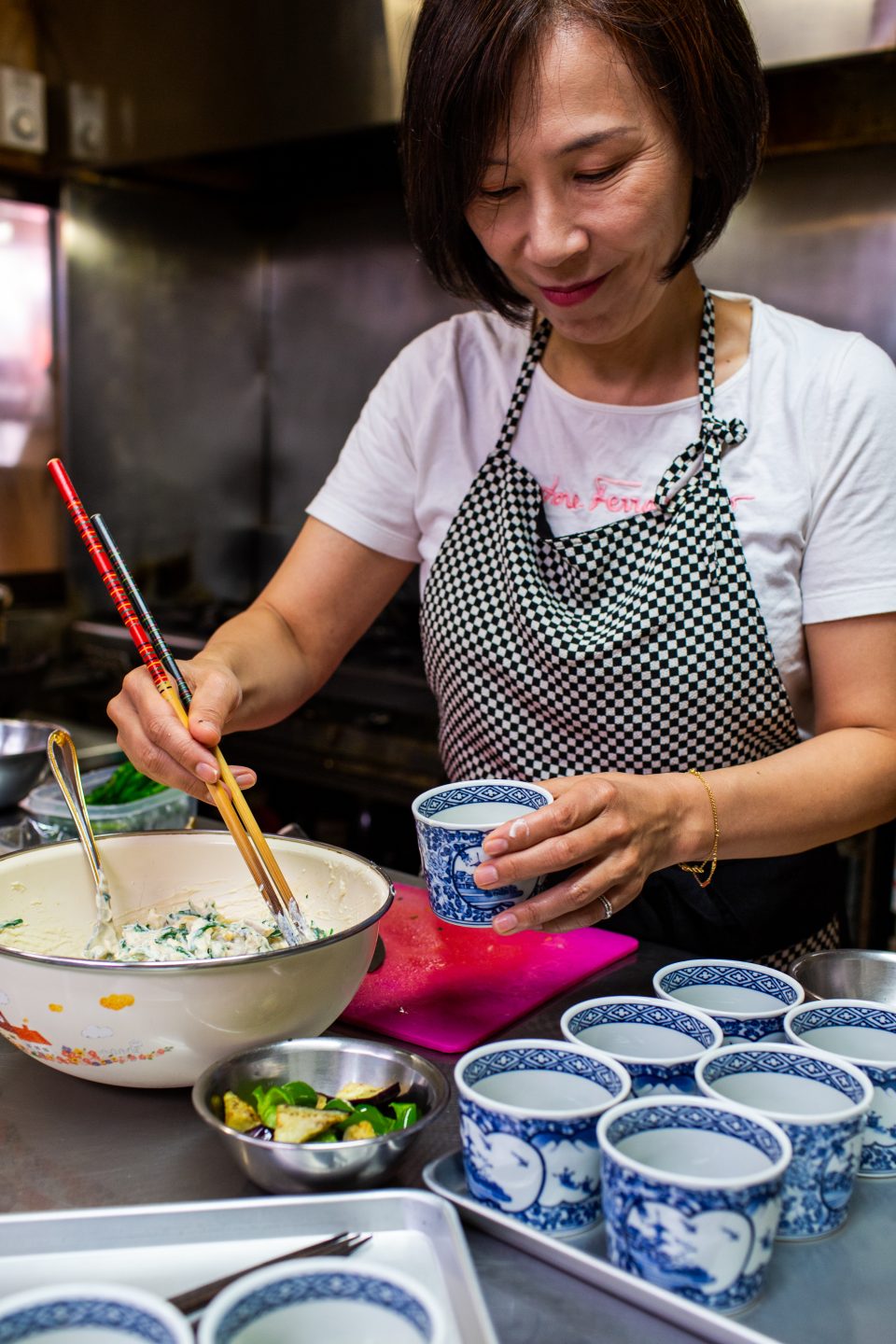
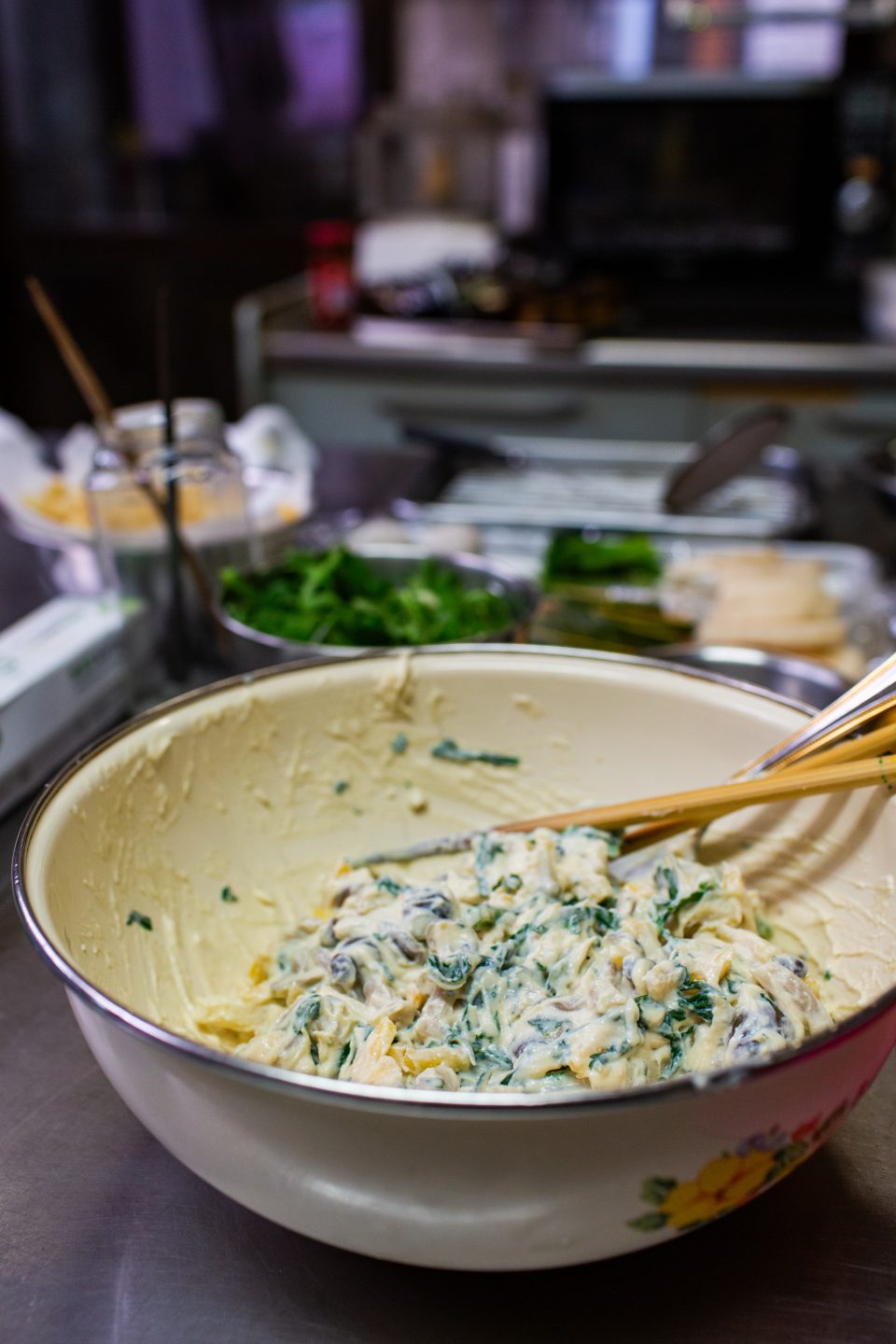
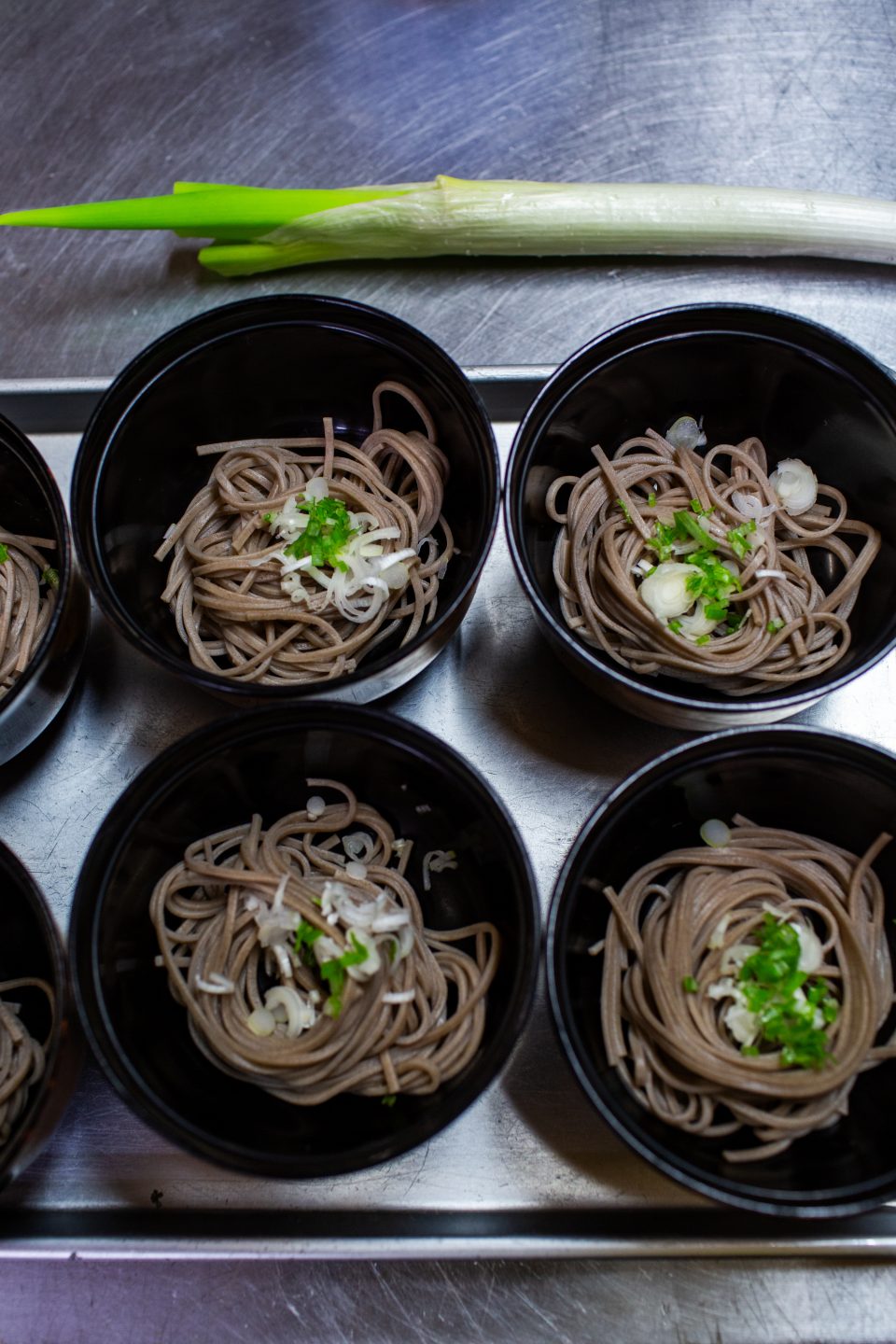
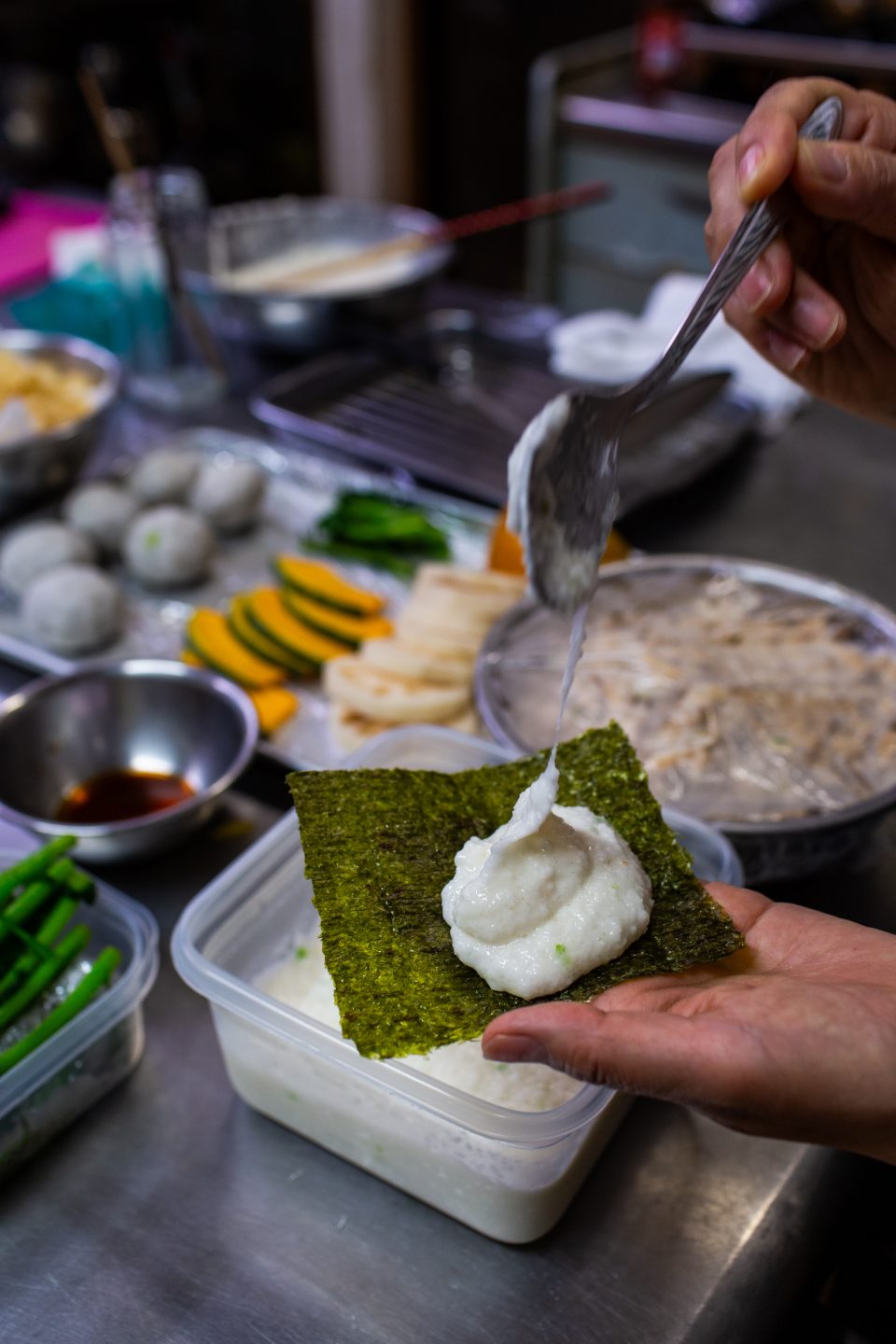
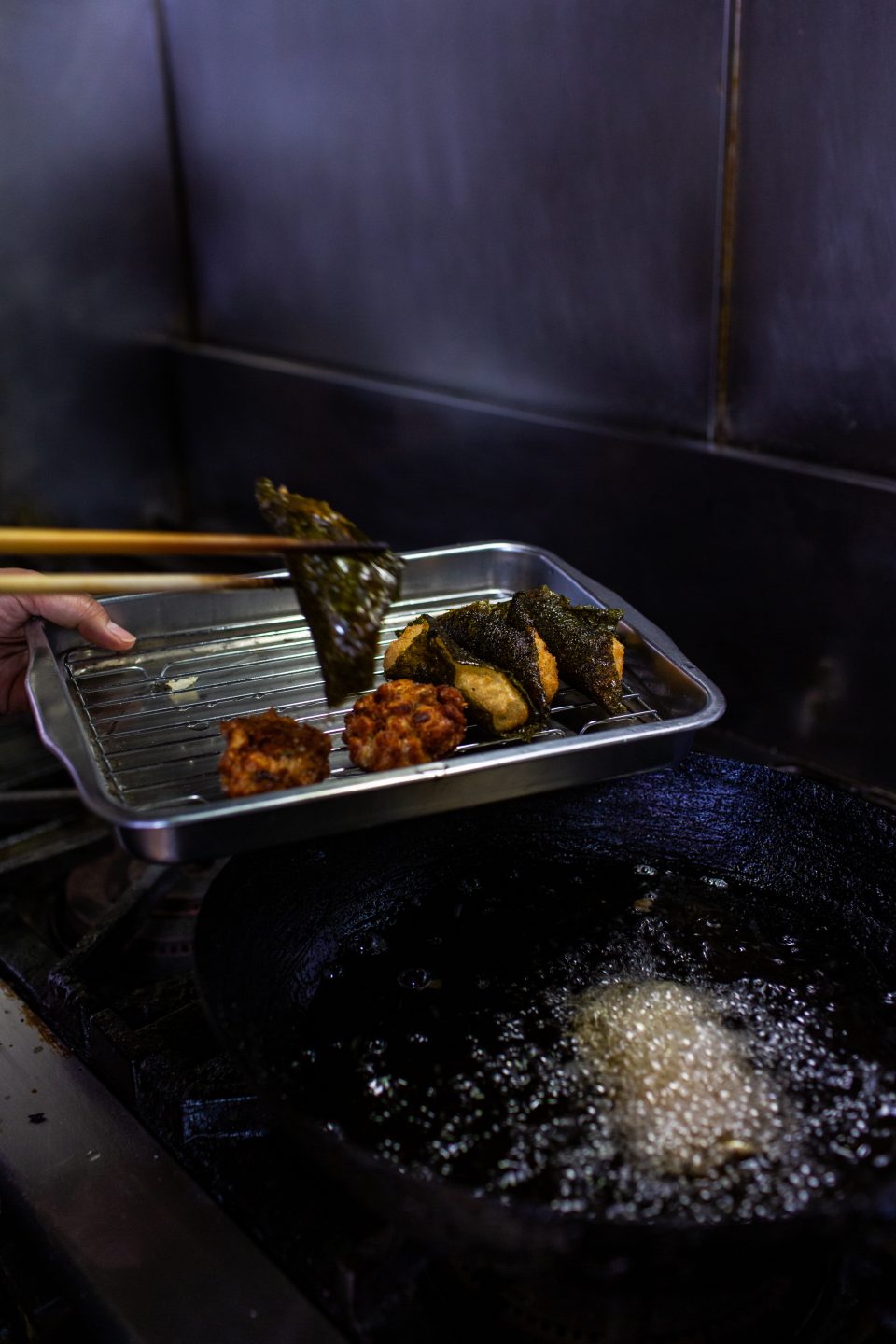
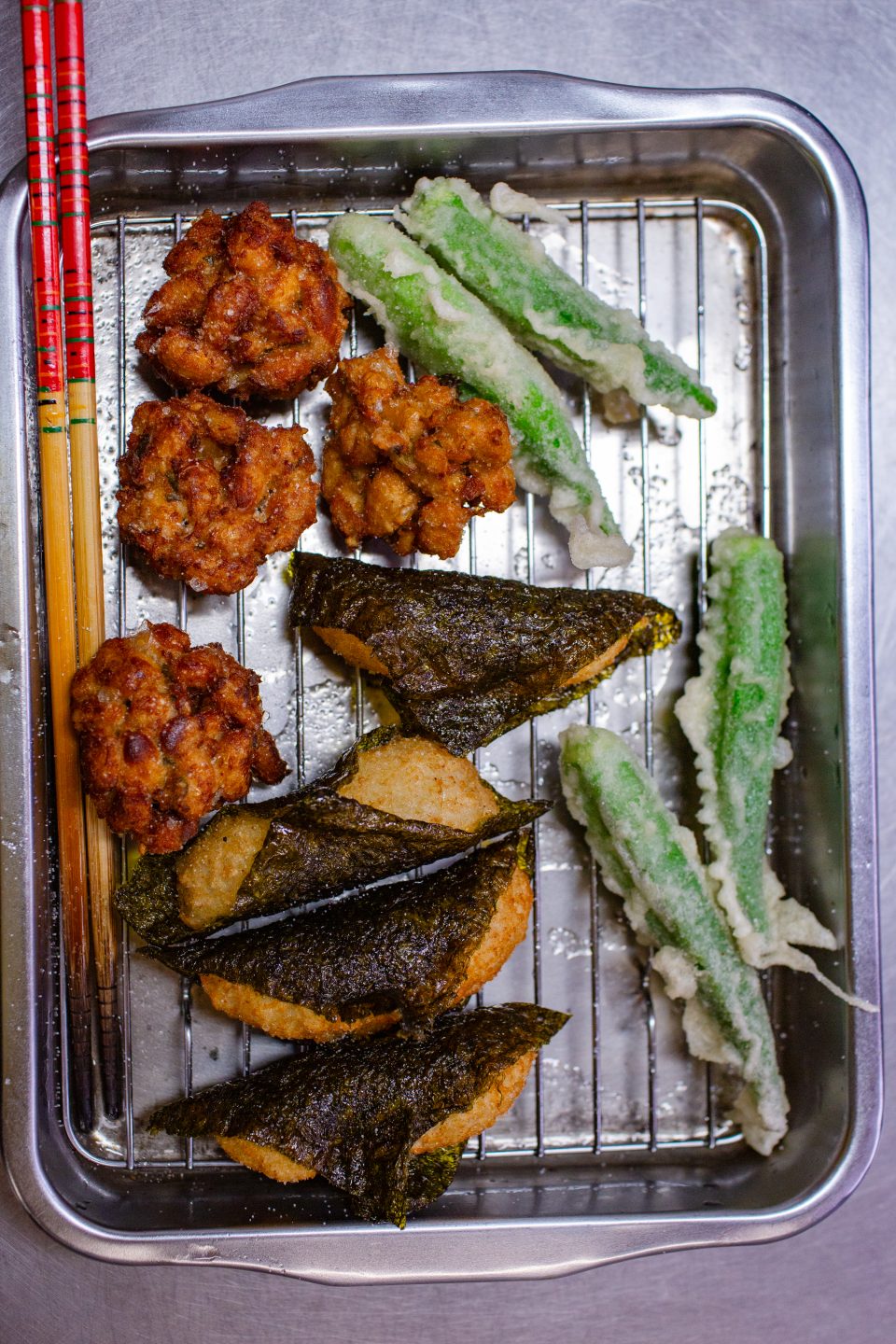
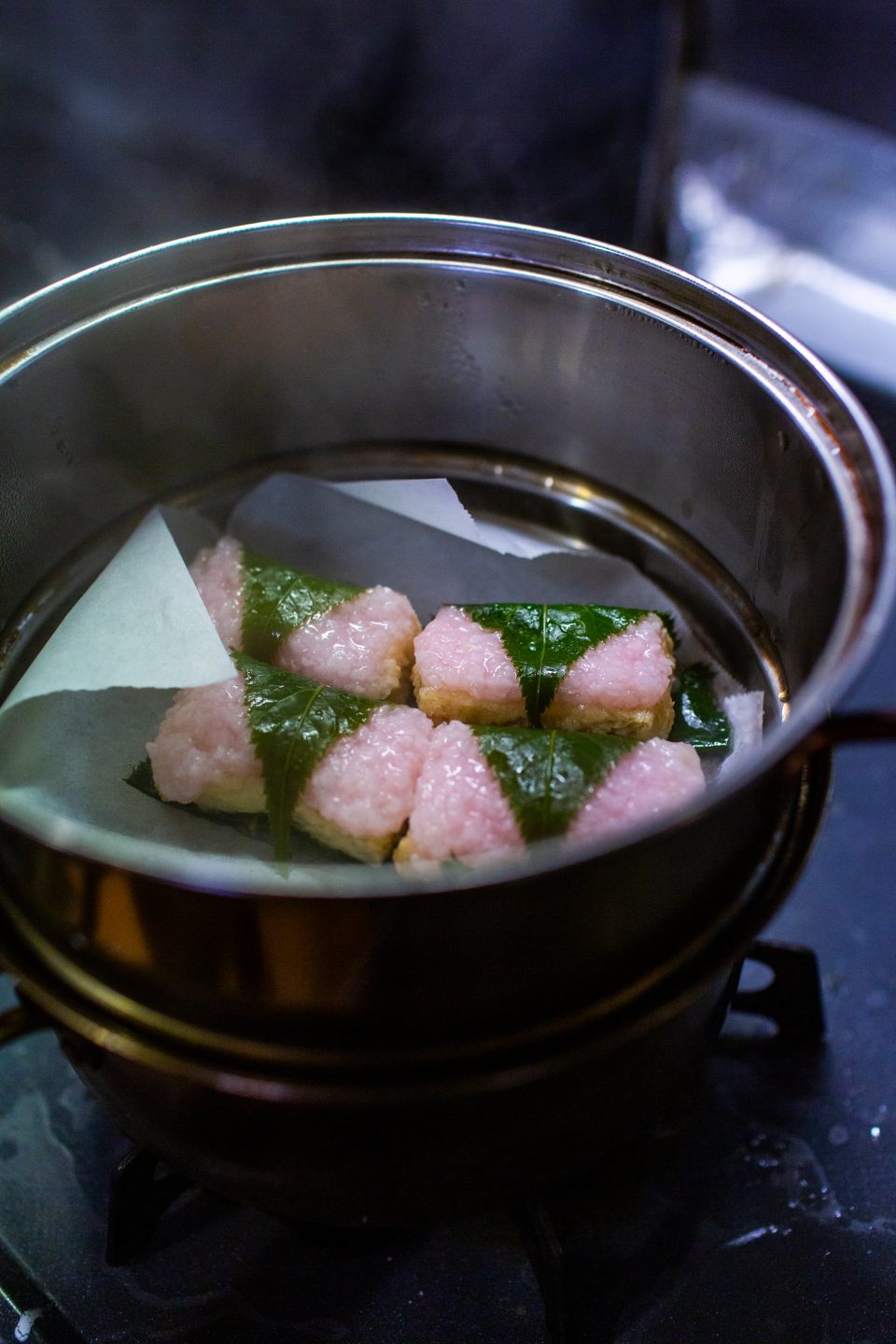

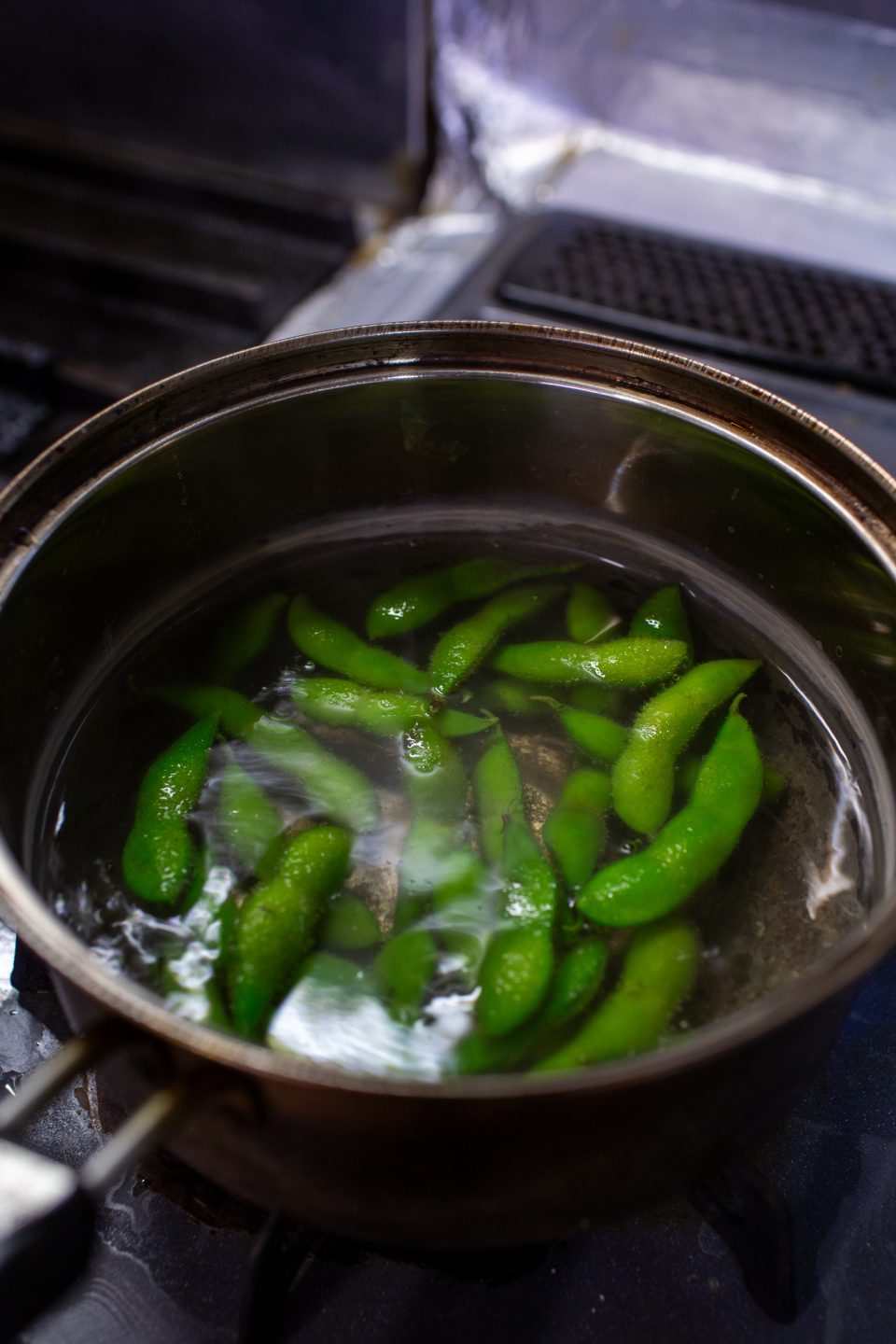
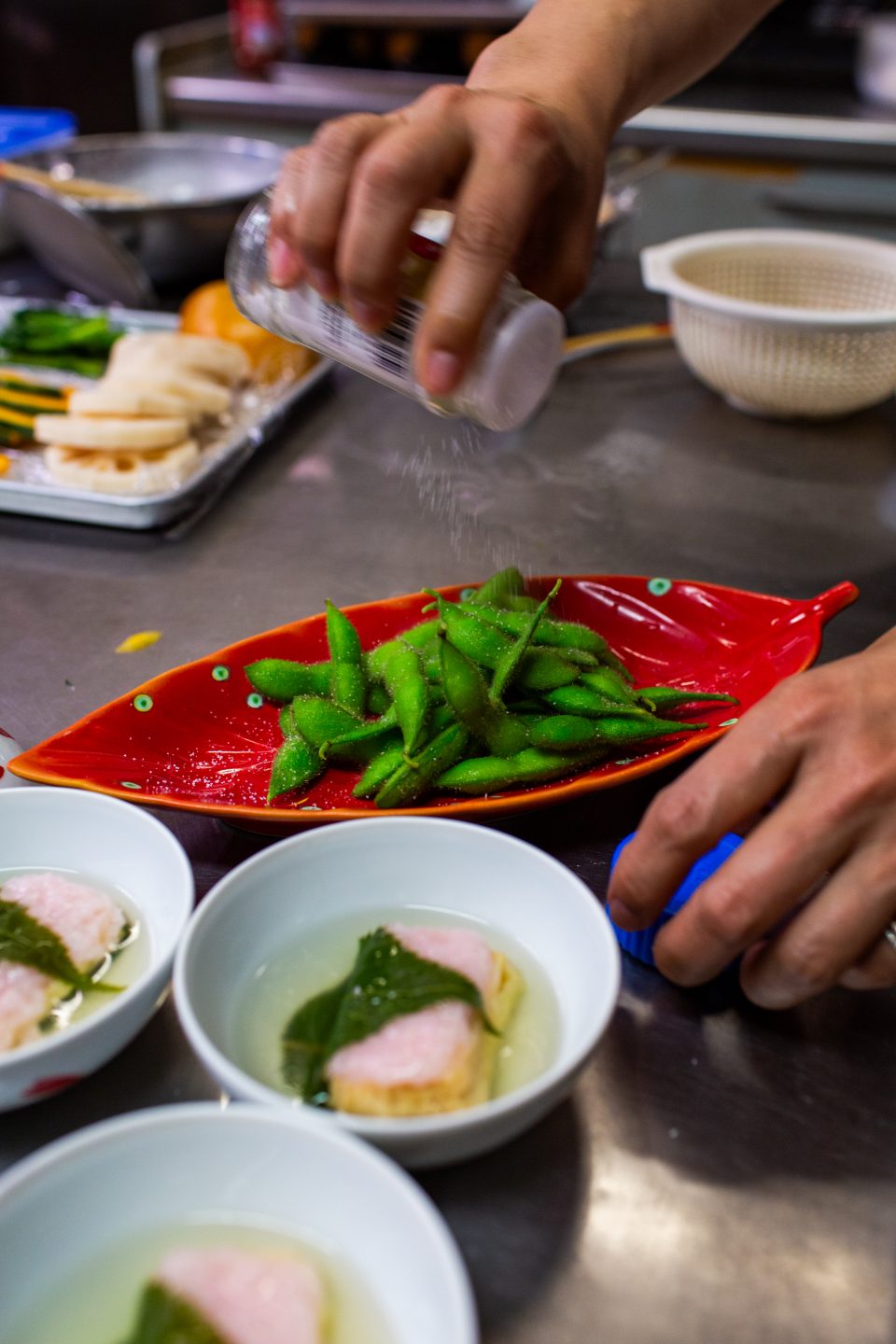
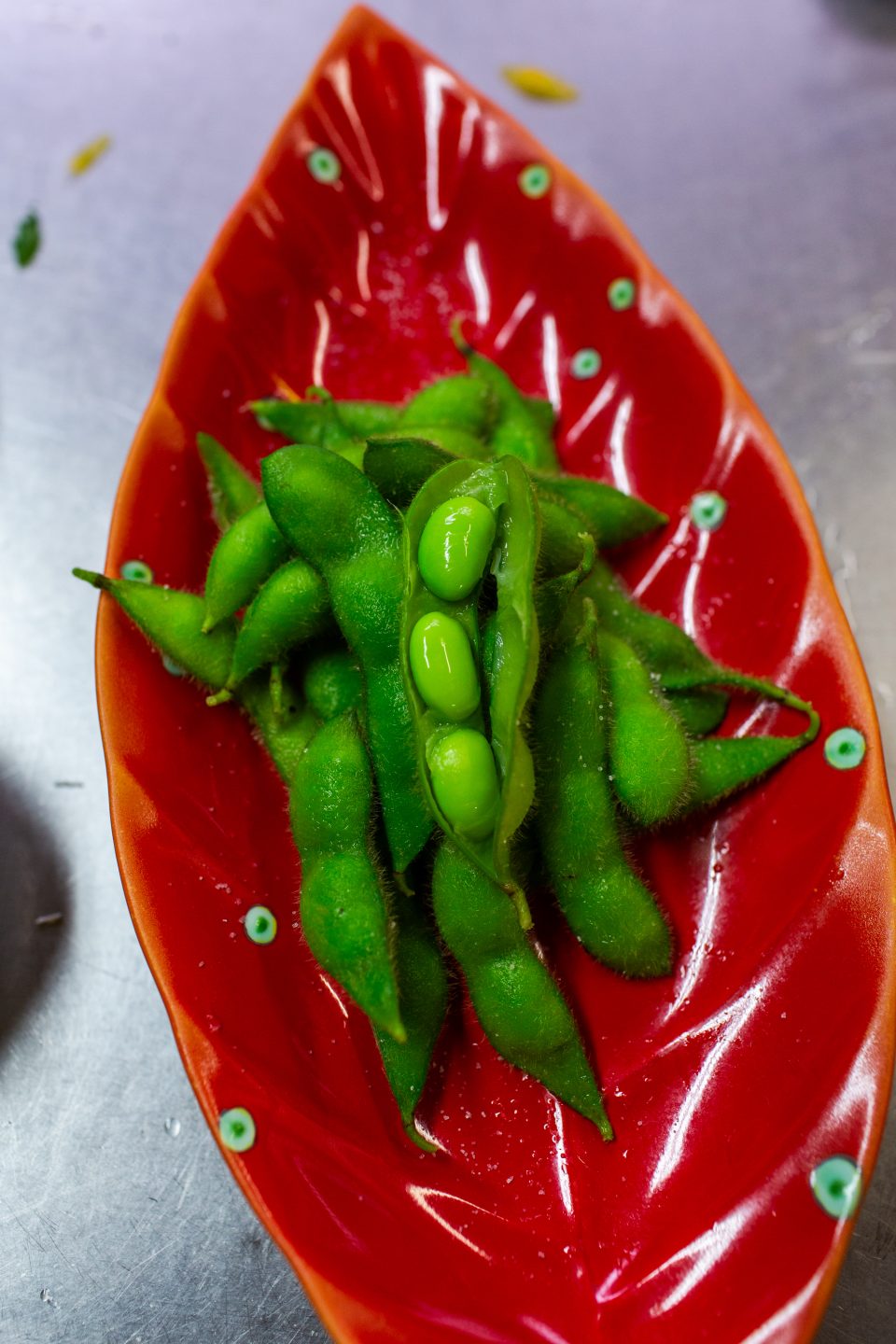
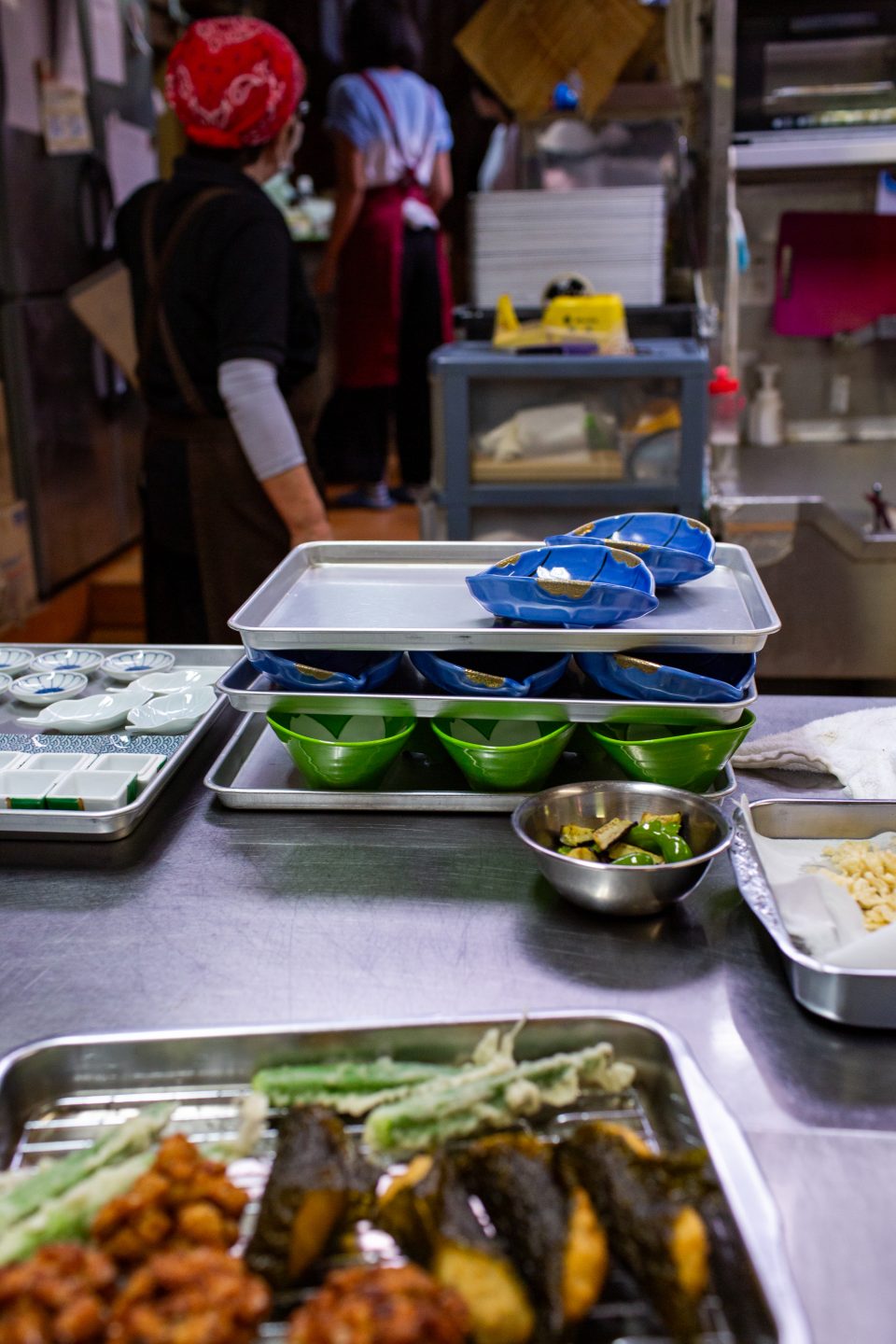
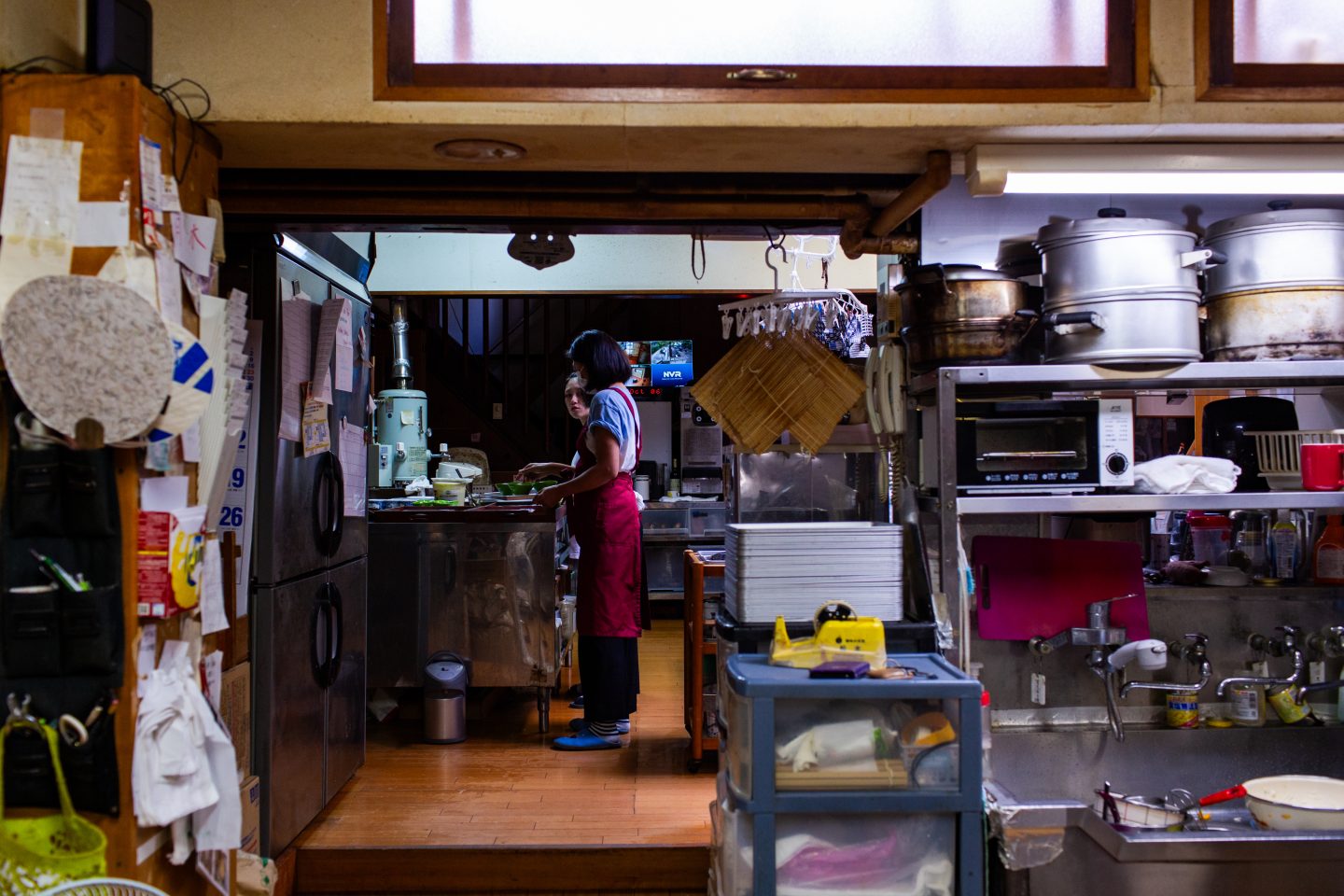
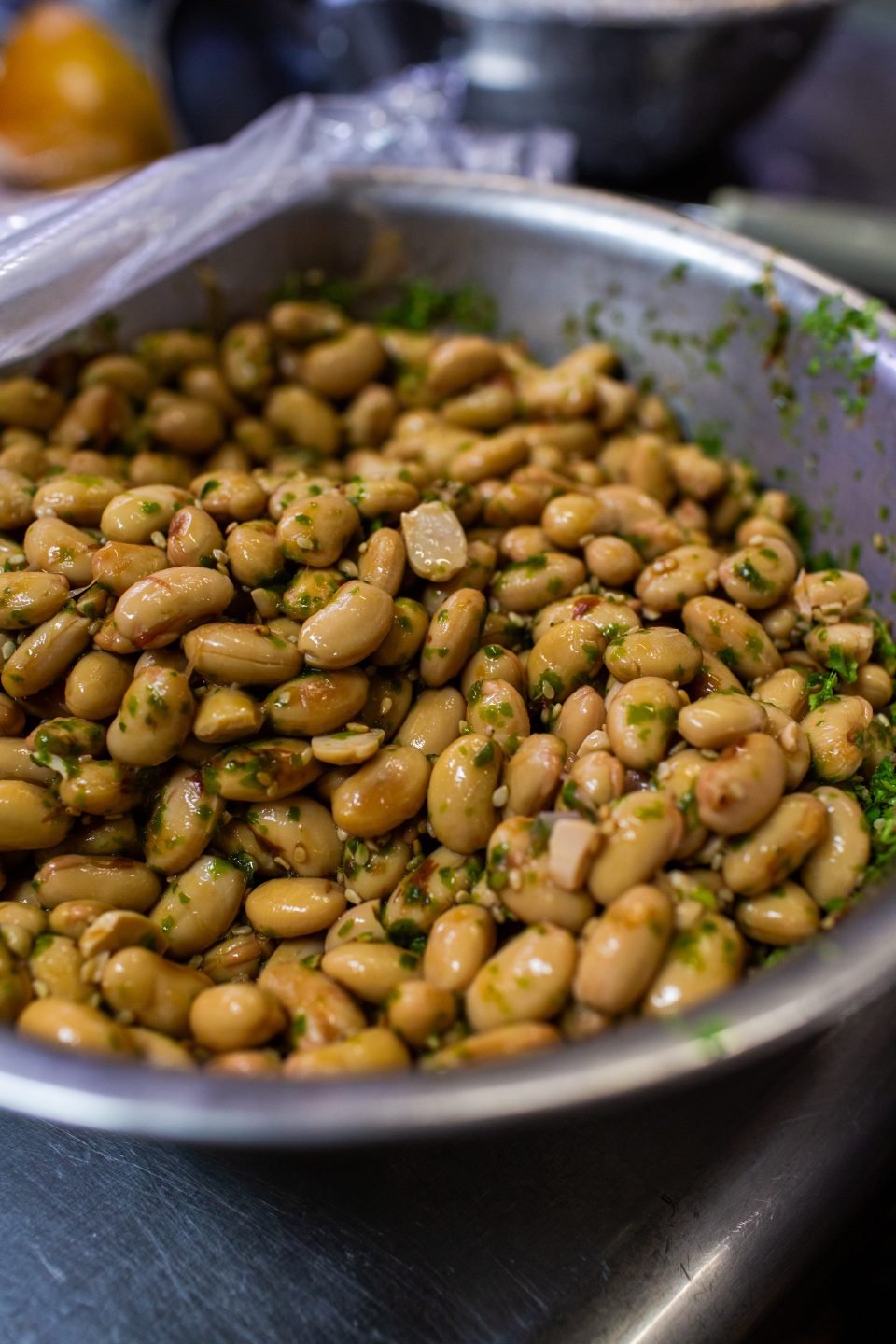
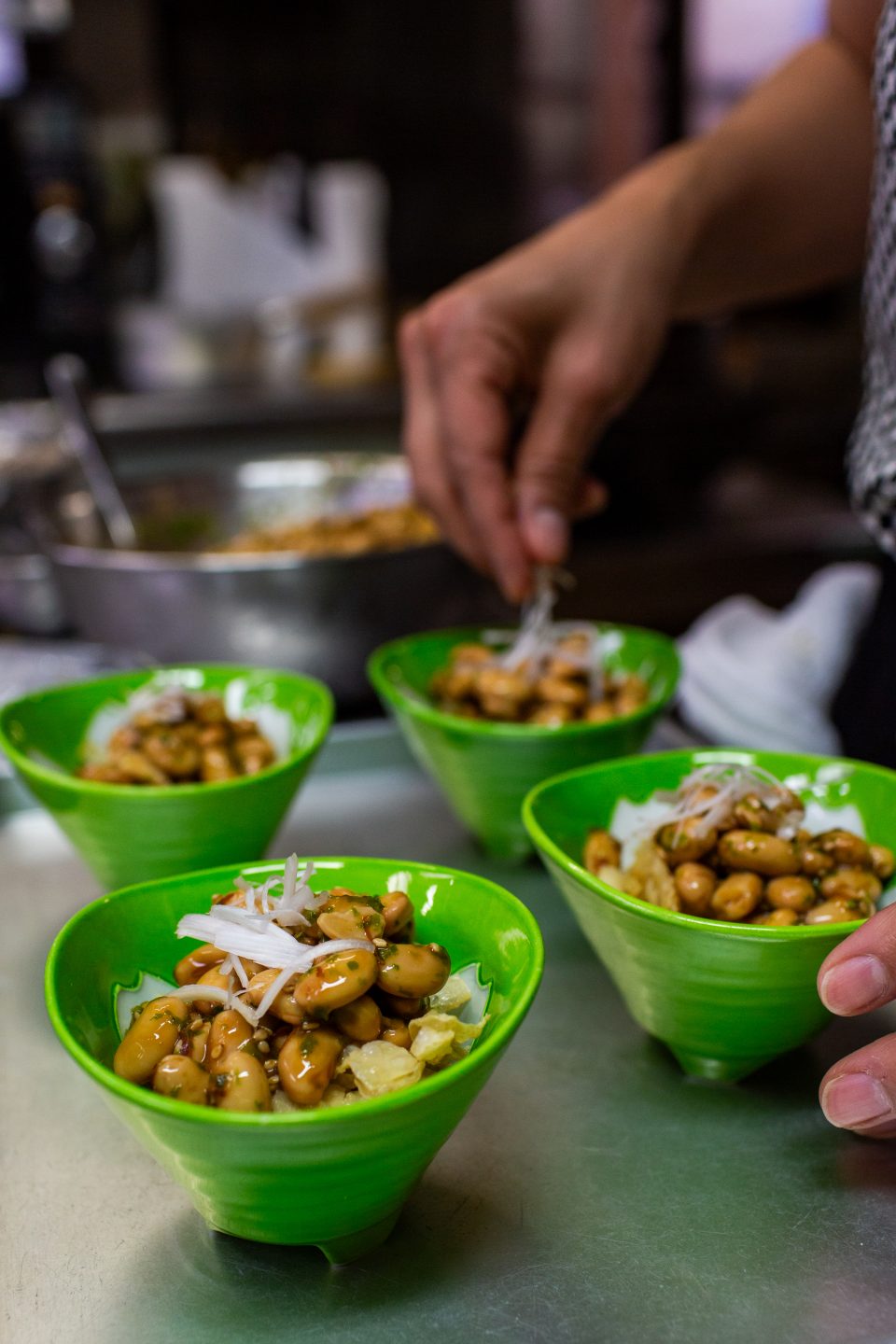
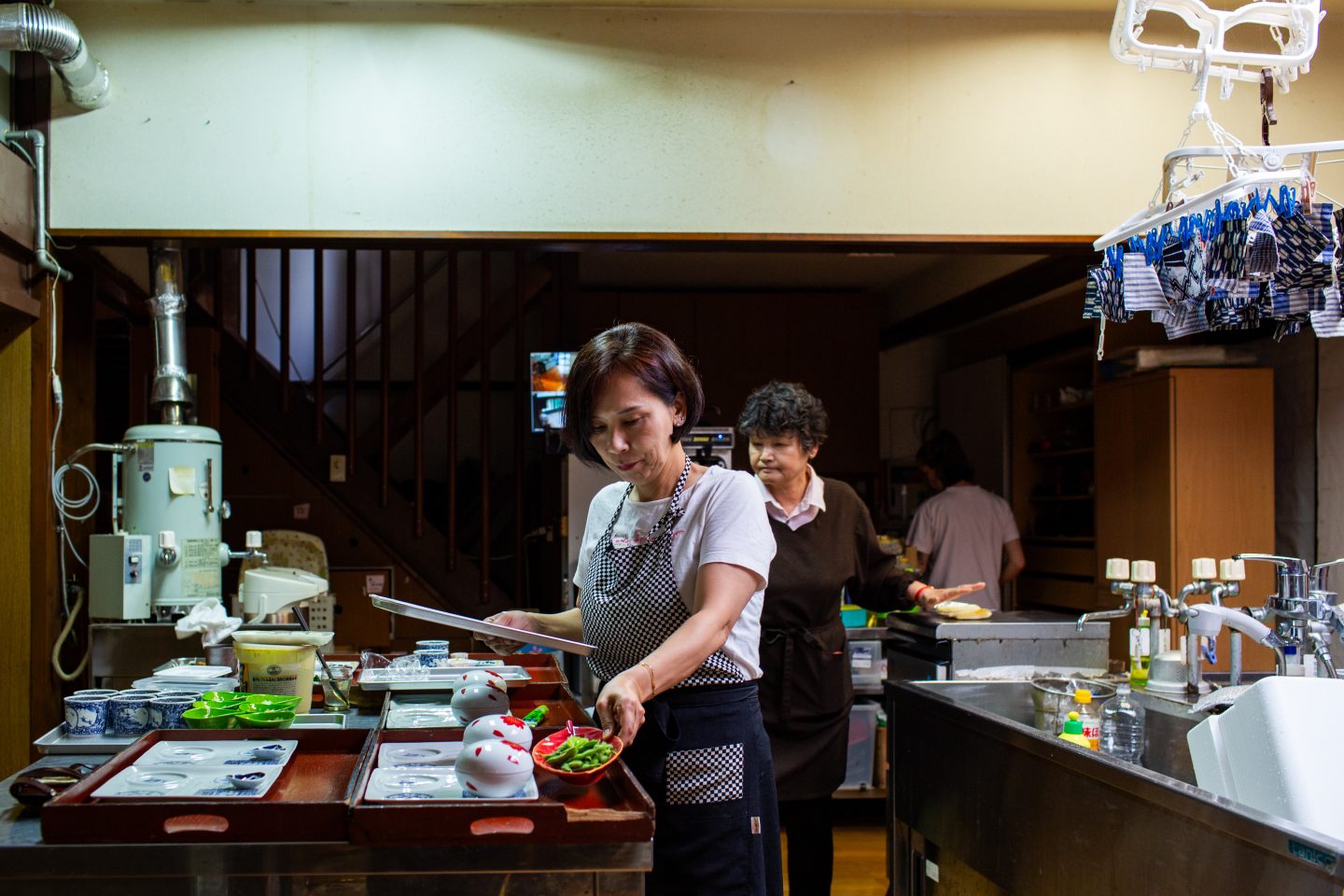
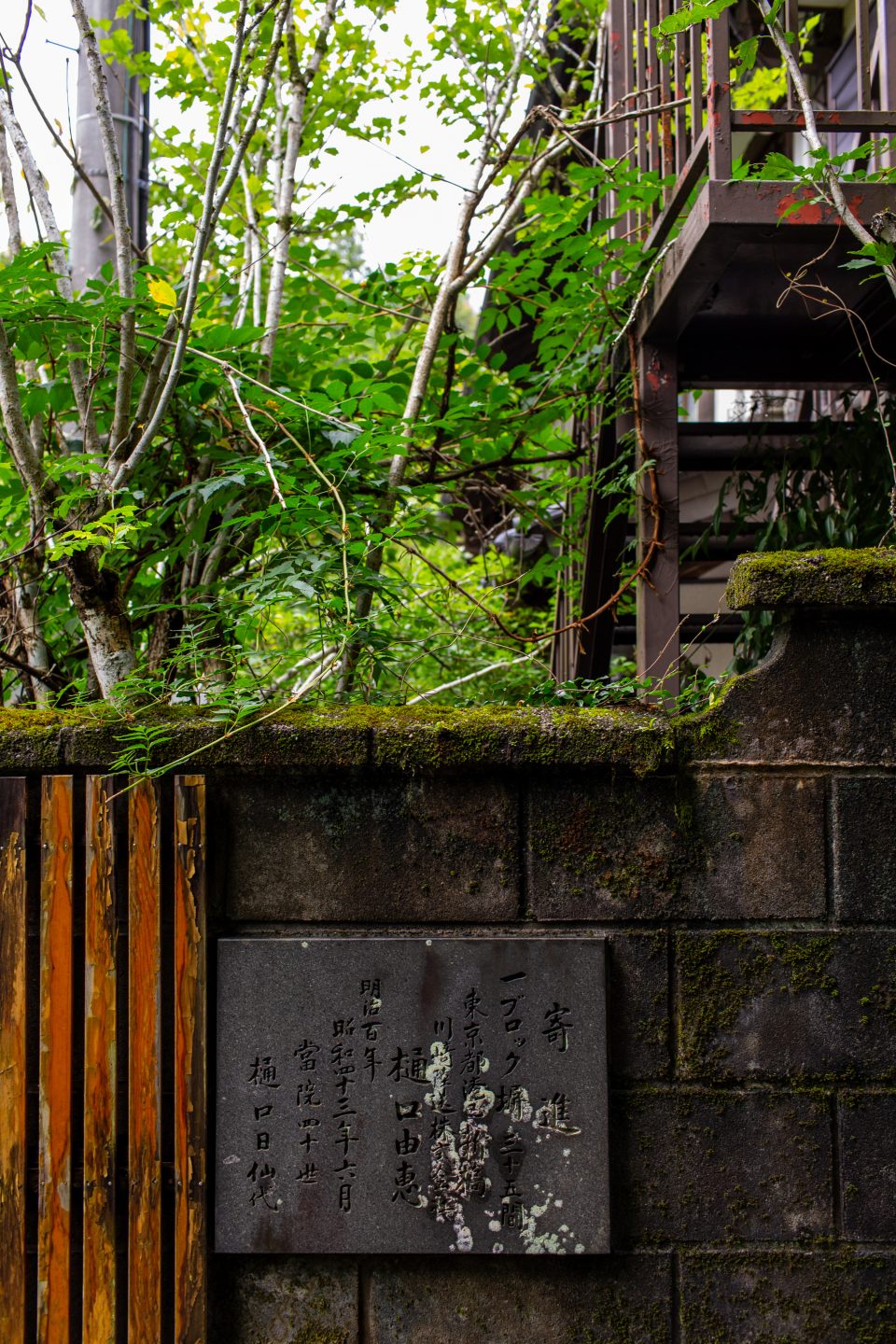
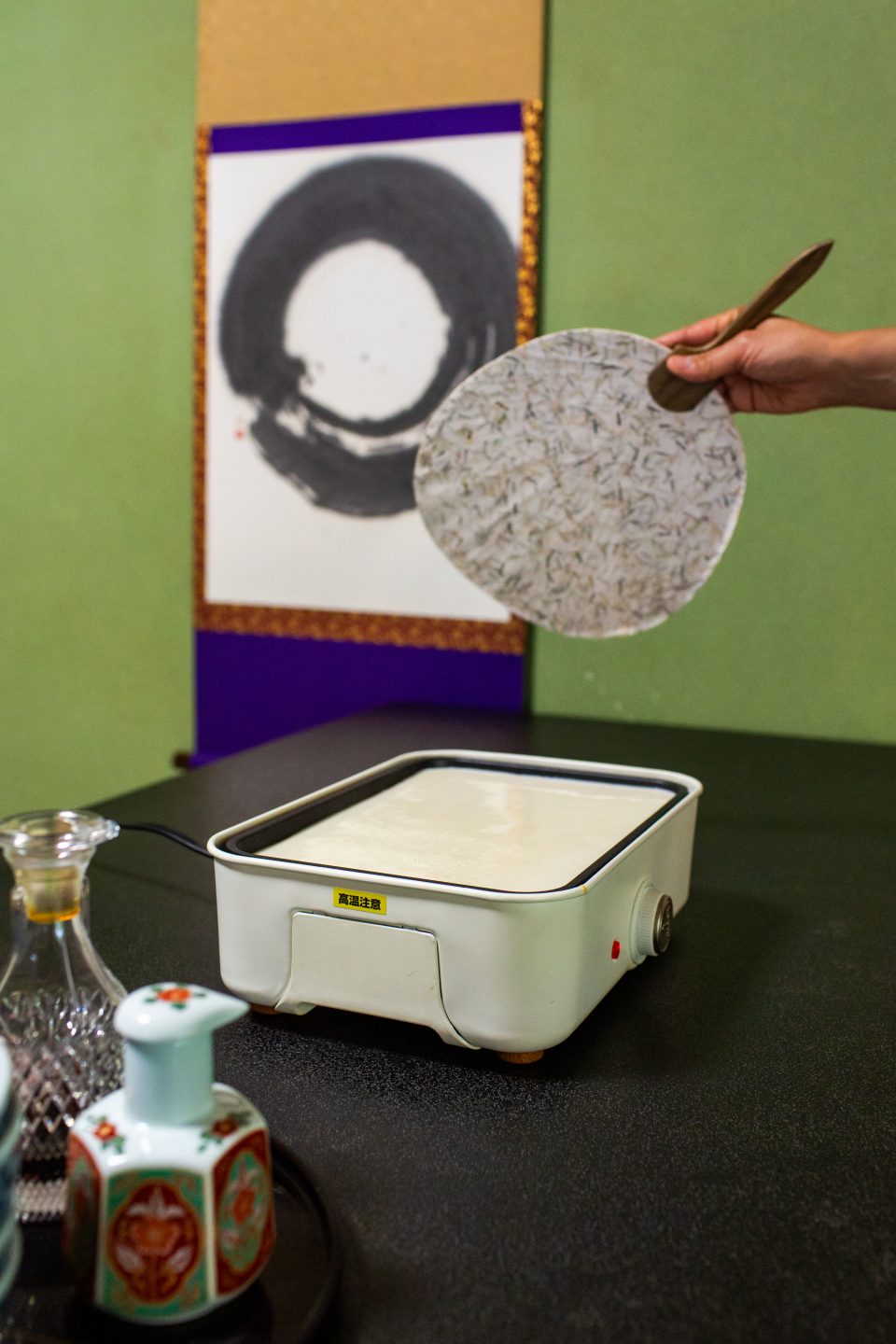
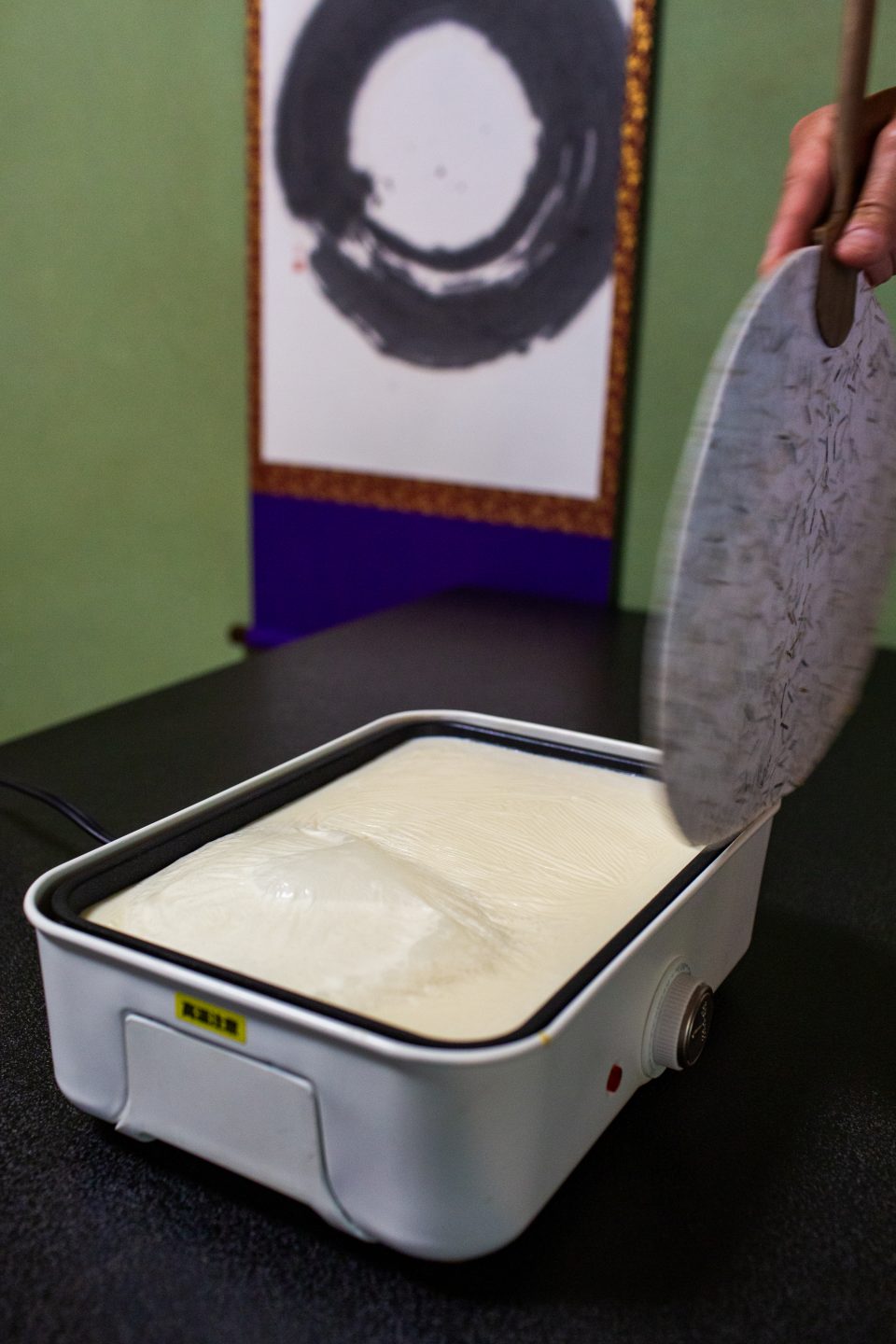
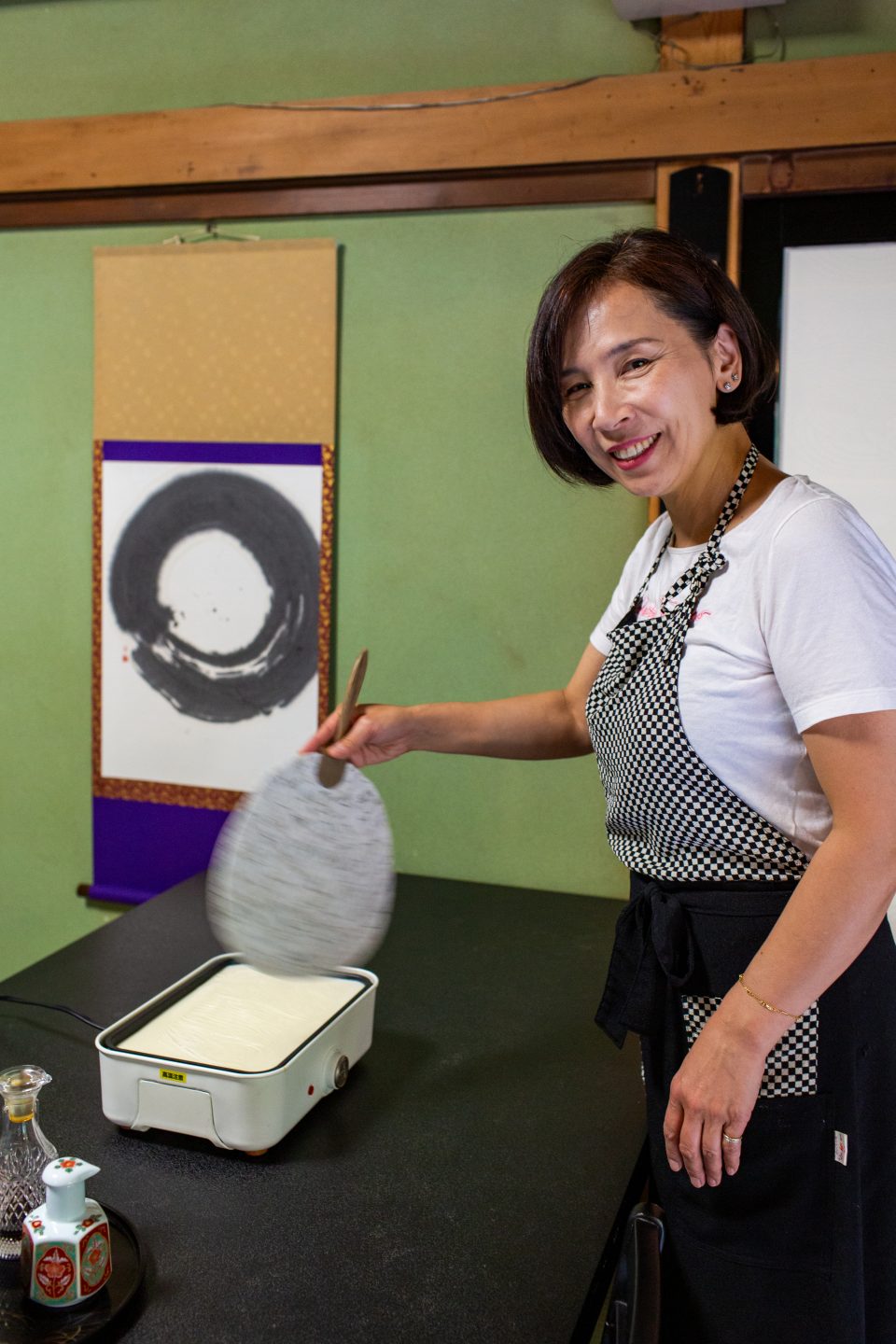

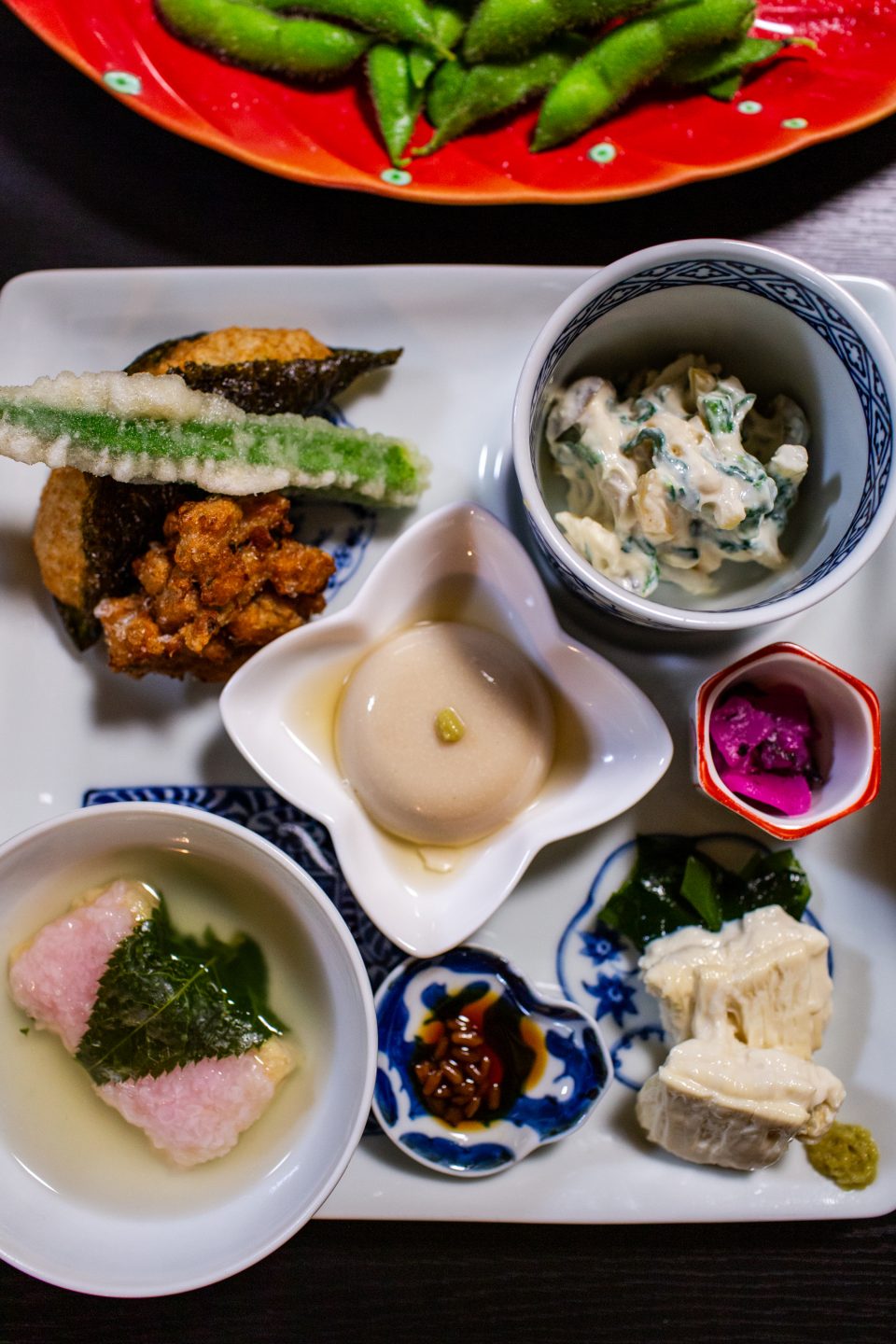
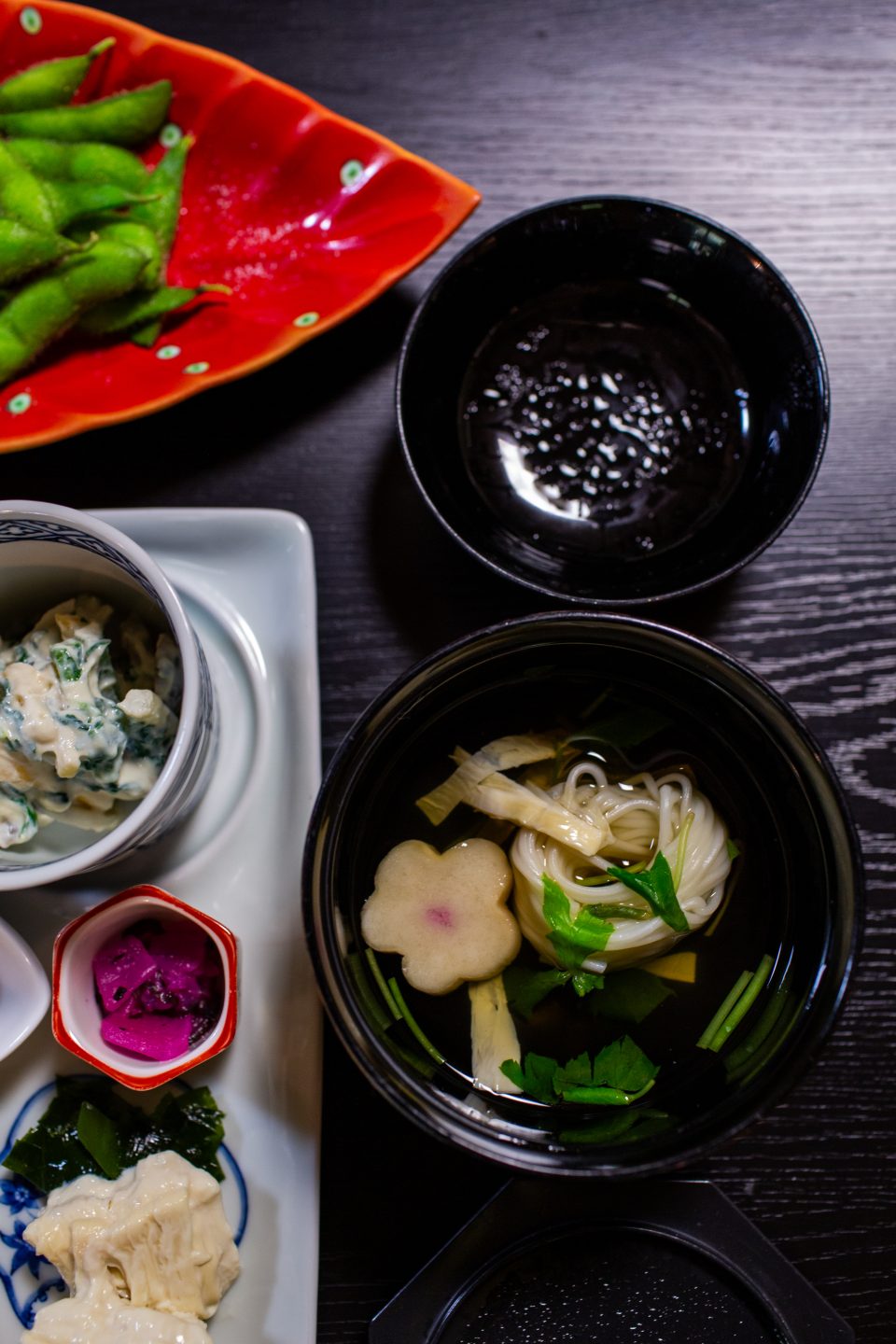
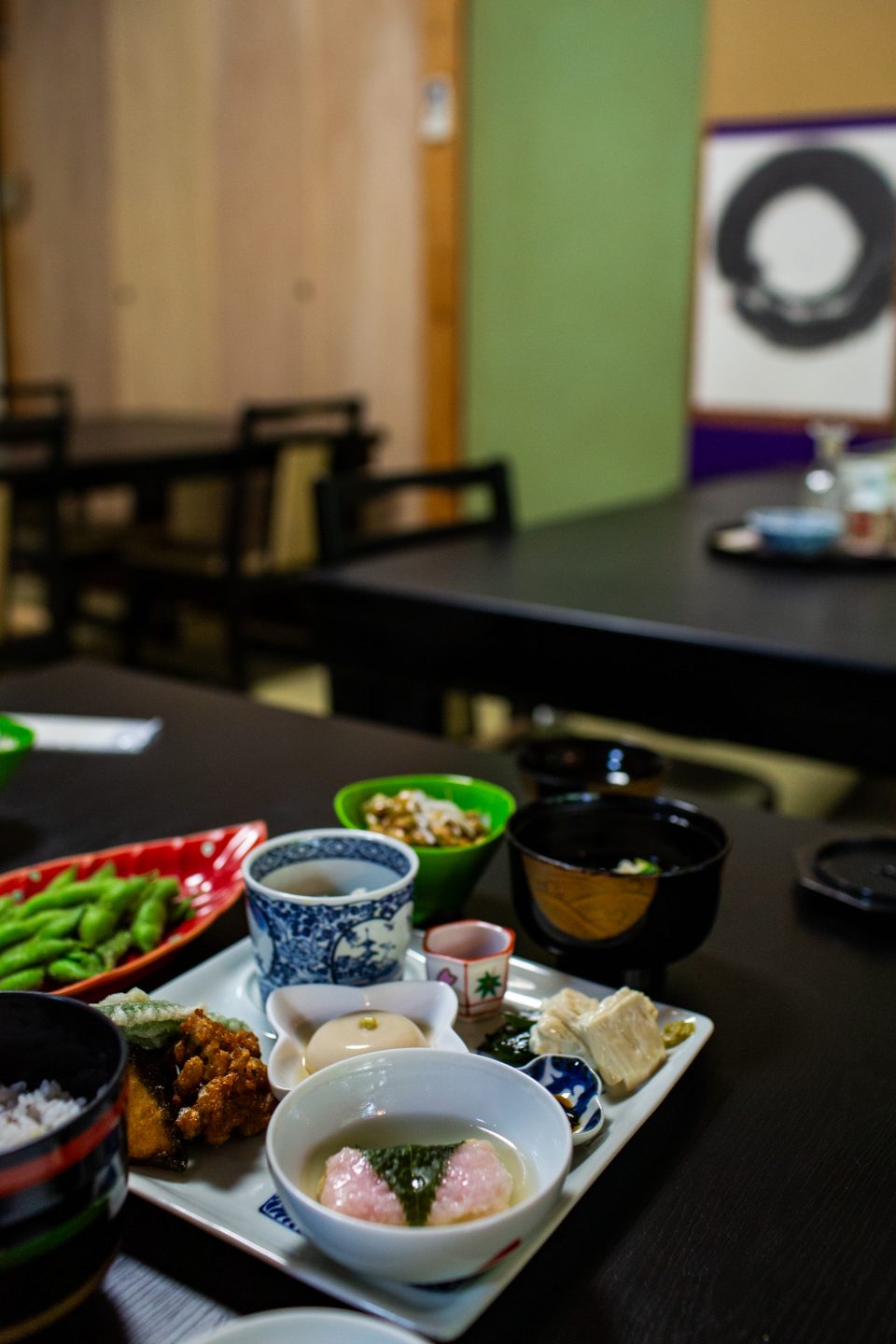
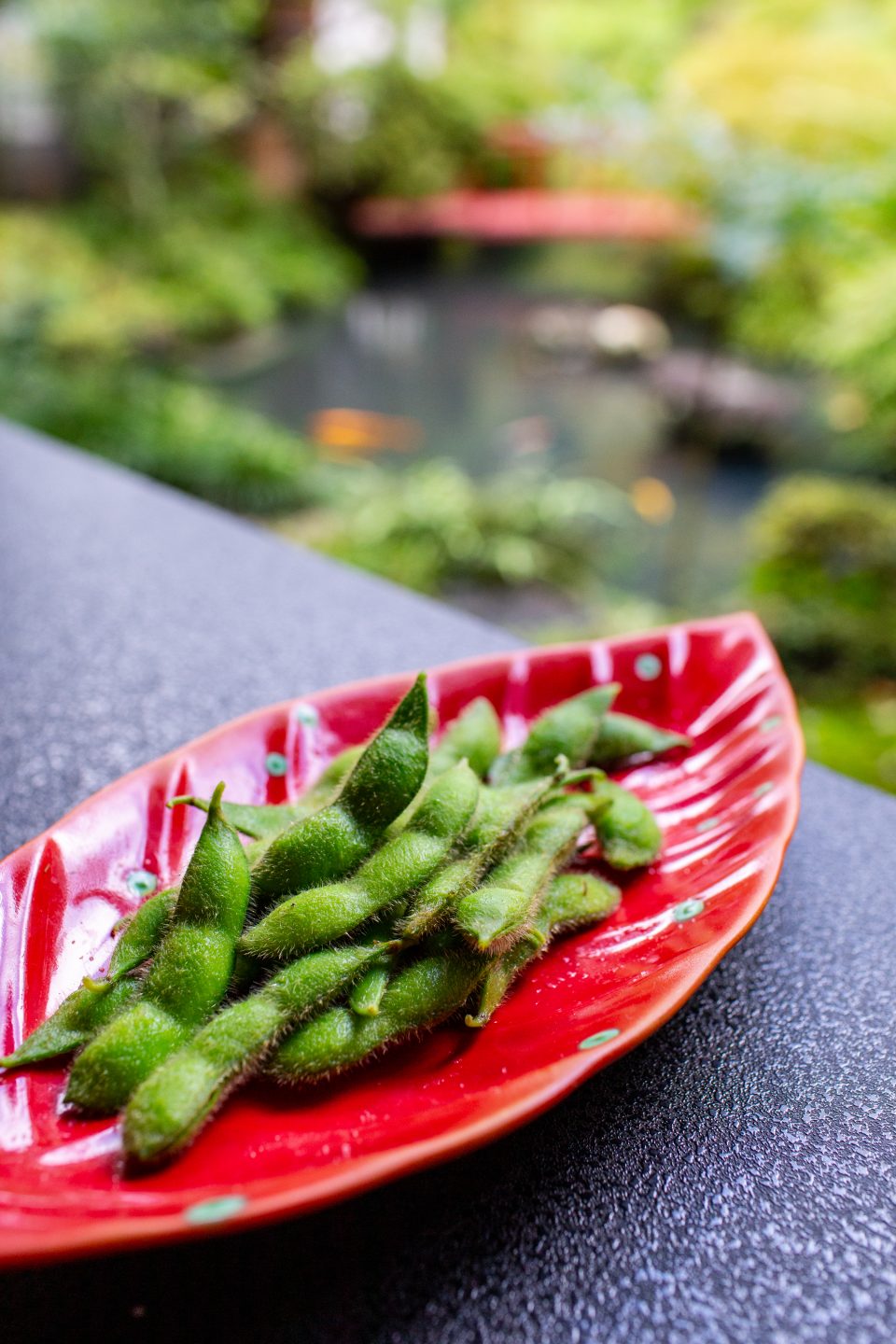
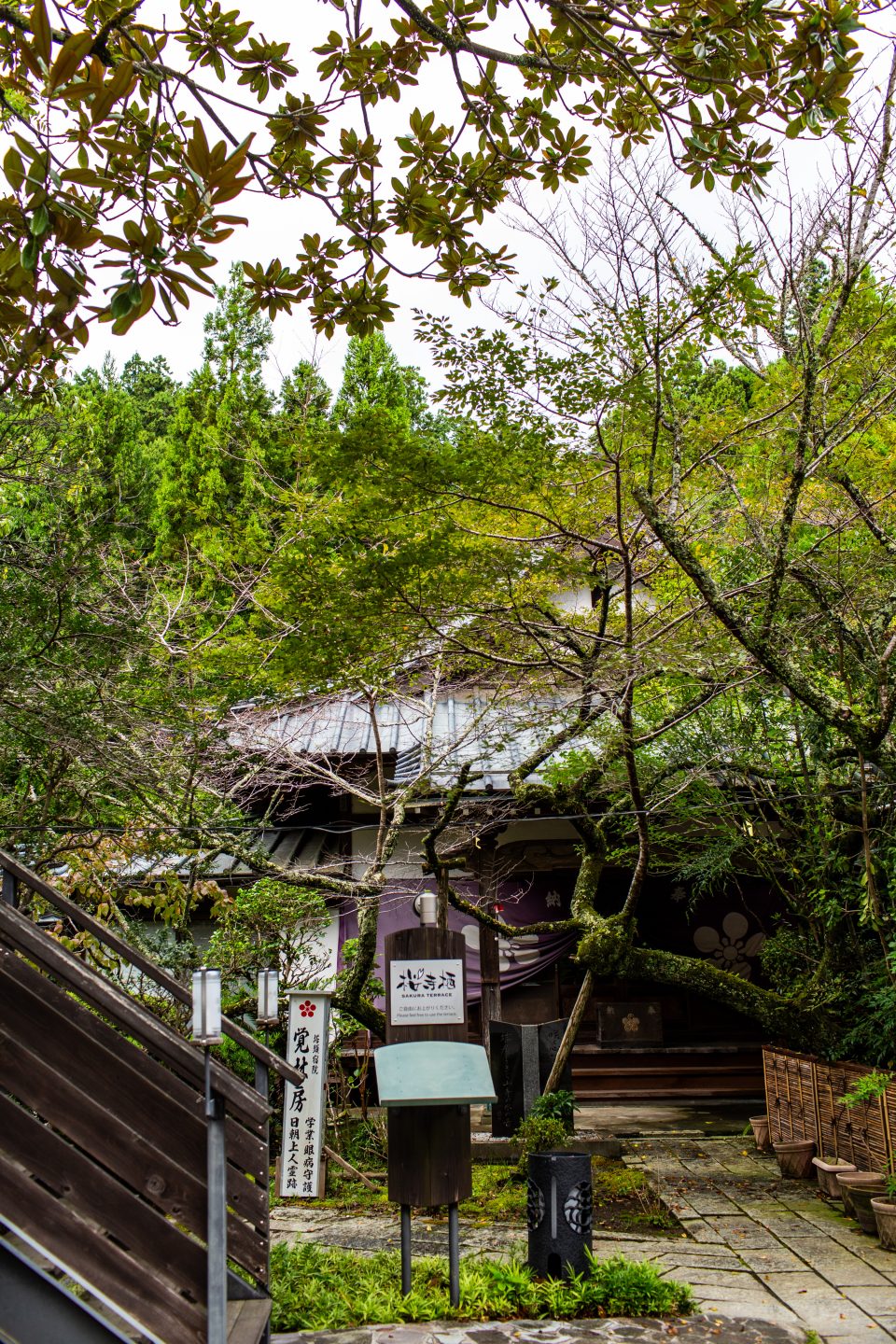
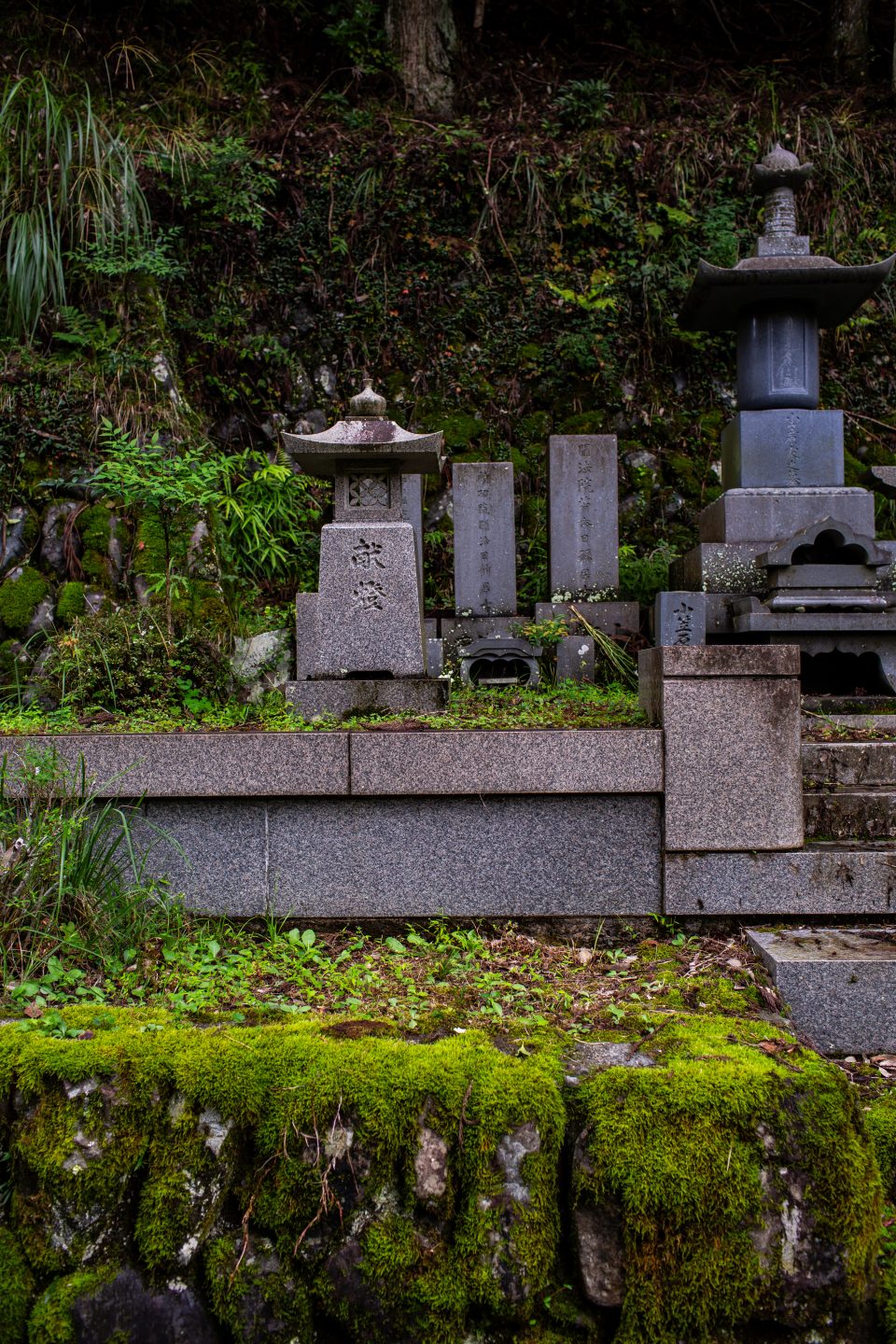
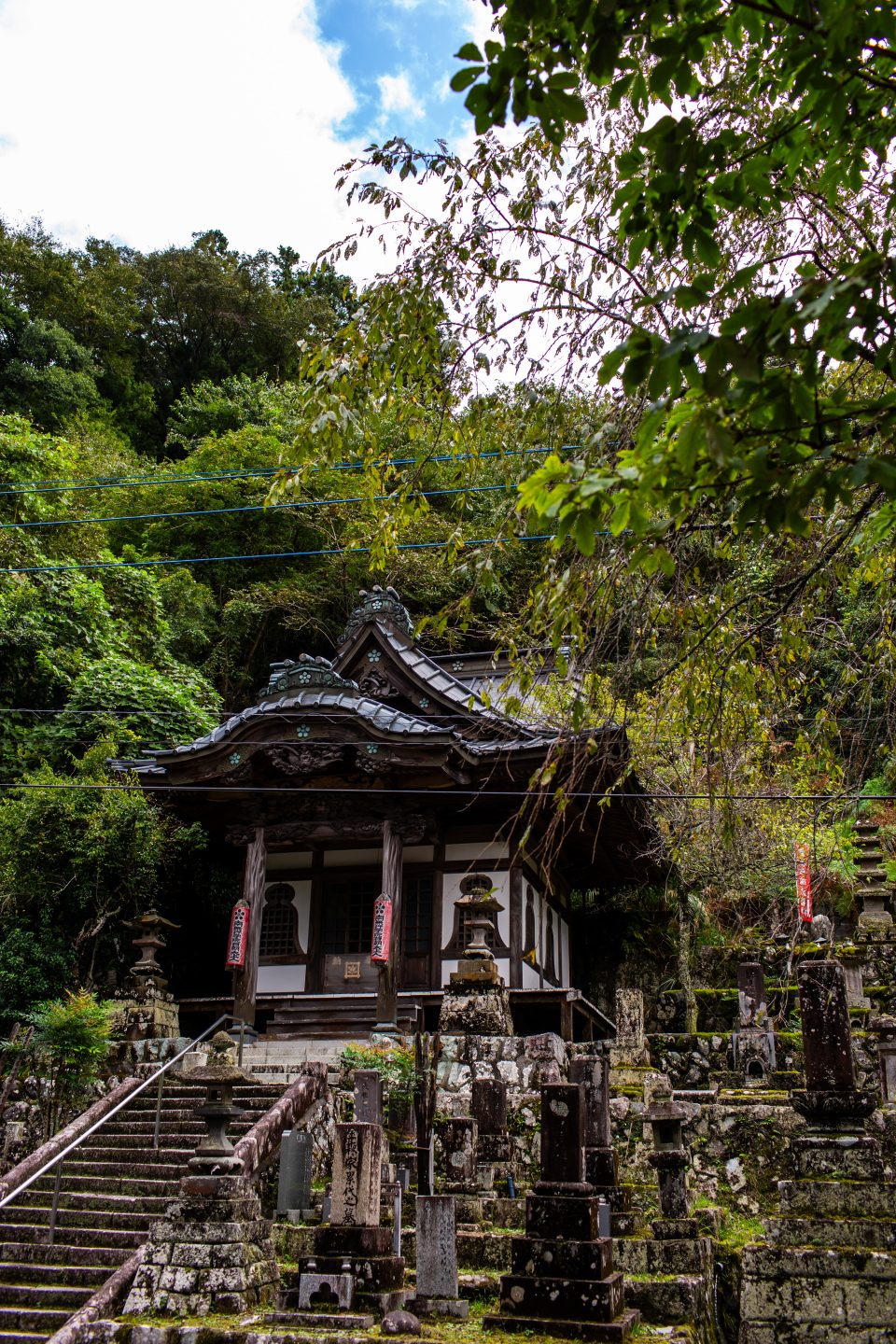
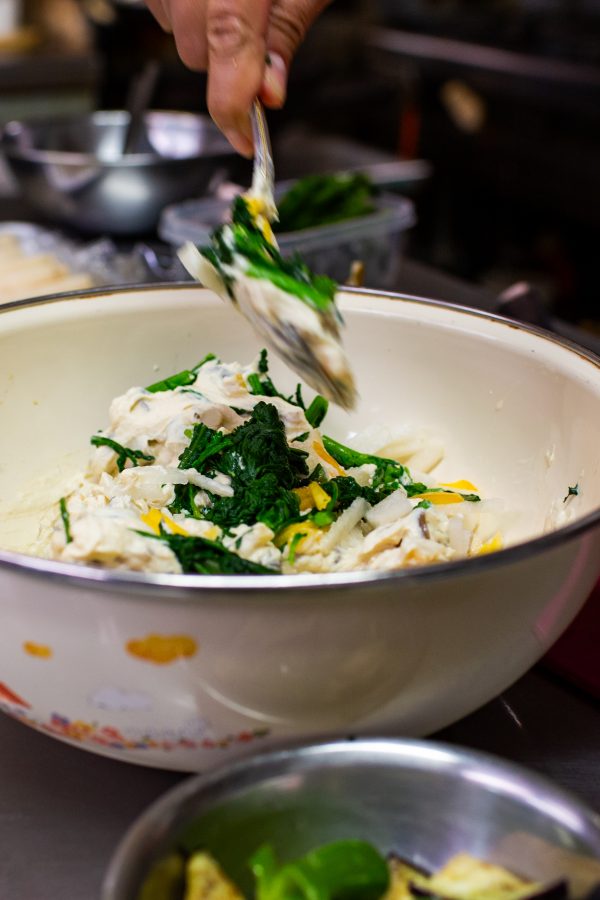
白和え (Shira-ae) Mashed Tofu Salad
Prep time: | Cook time: | Serves 4
- Tofu Dressing
- 300g silken tofu
- 1/2 tbs honey or maple syrup
- 1 tbs light soy sauce
- 2 tsp mirin
- salt to taste
- Use seasonal vegetable and fruit, here Junko used autumn produce:
- 1/4 nashi pear
- 1/4 persimmon
- a small bunch of chrysanthemum leaves
- 100g shimeji mushrooms
- A pinch of roasted white/black sesame seeds
- Take the silken tofu out of the packet and pat it dry with a paper towel to remove excess moisture. You can place a heavy plate on top to press out additional liquid.
- Break the silken tofu into small chunks and place it in a food processor with the honey and salt. Blend until smooth. For a coarser texture, mash the tofu with a fork instead of blending.
- Blanch the chrysanthemum leaves in boiling water for 2–3 minutes, then drain and squeeze out excess liquid. Slice them into toothpick-length pieces.
- Blanch the shimeji mushrooms, then drain and press out any extra liquid.
- Julienne the nashi pear and persimmon to match the length of the chrysanthemum leaves.
- In a salad bowl, combine all the sliced ingredients and mix in the tofu dressing.
- Serve the salad cold in a serving bowl, garnishing with roasted sesame seeds.

